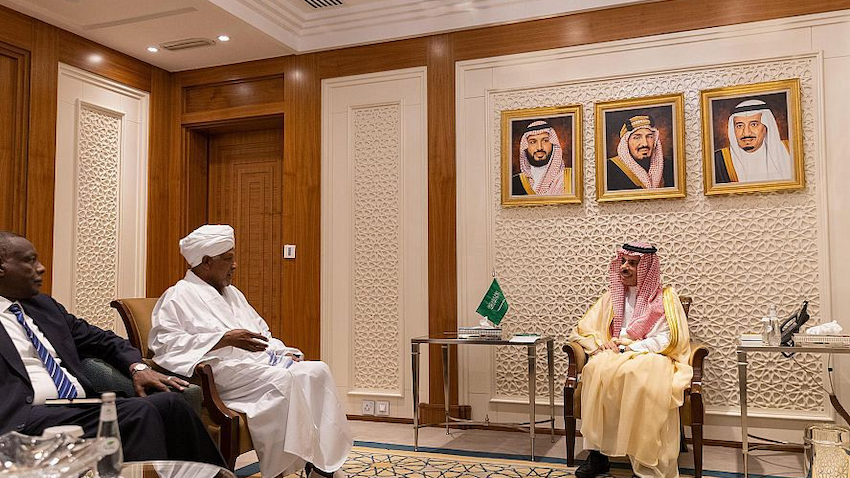All Global Research articles can be read in 51 languages by activating the Translate Website button below the author’s name.
To receive Global Research’s Daily Newsletter (selected articles), click here.
Click the share button above to email/forward this article to your friends and colleagues. Follow us on Instagram and Twitter and subscribe to our Telegram Channel. Feel free to repost and share widely Global Research articles.
***
Introductory Note
We bring to the attention of our readers this important report by the Research Unit For Political Economy (R.U.P.E) (based in Mumbai), first published in 2003. The authors analyze and carefully document how the WSF was set up as a “controlled opposition” fully financed by Wall Street and the Washington Consensus.
Initially it was the Ford Foundation (with historical links to the CIA) which funded the WSF.
It is worth noting that the WSF project was in the planning stage in the immediate wake of the March 1999 NATO war on Yugoslavia, which had been supported and endorsed by several “Left-wing” “progressive organizations”.
The “World Social Forum” was to meet annually in the month of January, coinciding with the World Economic Forum venues of Big Money corporate leaders which meet on an annual basis in January in Davos, Switzerland.
The first WSF venue held in Porto Alegre was launched in January 2001, eight months prior to the September 11, 2001 attacks, and the subsequent war on Afghanistan which was launched on October 7, 2001.
The WSF debate was limited to a narrow critique of the neoliberal agenda. It did not take a stance against U.S.-NATO-led wars, nor did it address the relationship between U.S. hegemonic acts of war and the imposition of “strong economic medicine” (aka economic warfare) by the IMF / World Bank on behalf of powerful financial interests.
According to RUPE:
“the very principles and structure of the WSF ensure that it will not evolve into a platform of people’s action and power against imperialism”
This R.U.P.E report was published in September 2003, a few months prior to the WSF meeting in Mumbai in January 2004.
The underlying narrative and label of the WSF (financed by Big Money foundations) was and remains “Another World is Possible”.
Michel Chossudovsky, Global Research, May 1, 2023
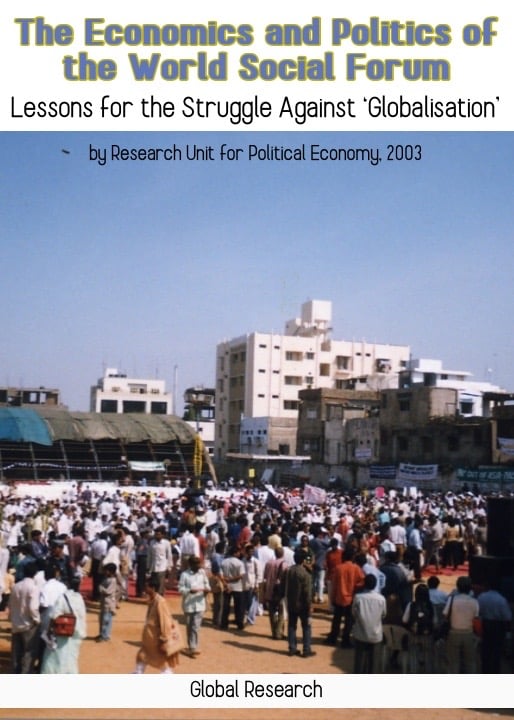
The Economics and Politics of the World Social Forum
Lessons for the Struggle Against ‘Globalisation’
by
Research Unit For Political Economy, September 2003
Global Research e-Book, April 2023
About the Author
The Research Unit for Political Economy (R.U.P.E.), located in Mumbai (Bombay), India, is constituted under the People’s Research Trust, which is a registered public trust. The R.U.P.E. runs on voluntary labour and limited finances raised from personal contributions. It is not affiliated to any other body.
The Research Unit for Political Economy is concerned with analysing, at the theoretical and empirical levels, various aspects of the economic life of India and its institutions. It aims to compile, analyse, and present information and statistics so as to enable people to understand the actual mechanics of their every day economic life. And, in this, it aims to take the assistance and insights of people engaged in every sphere of productive work and society.
The R.U.P.E. publishes Aspects of India’s Economy, a journal which aims to explain day-to-day issues of Indian economic life in terms that can easily be understood, and to link them with the nature of the country’s political economy. Aspects has no fixed periodicity, but about three issues appear a year. Subscriptions are thus for a particular number of issues, not months/years.
Table of Contents
Introduction: ‘Globalisation’
I. How and Why the World Social Forum Emerged
II. WSF Mumbai 2004 and the NGO Phenomenon in India
III The Ford Foundation — A Case Study of the Aims of Foreign Funding
IV. Funds for the World Social Forum
.
Introduction: ‘Globalisation’
It became fashionable in the 1990s to use the term ‘globalisation’ to describe the economic changes being brought about worldwide. We were told that economies worldwide were becoming more integrated, and that prosperity would spread to all.
The great range of actual measures carried on under the label of globalisation, however, were not those of integration and development. Rather, they were processes of imposition, disintegration, underdevelopment and appropriation. They were of continued extraction of debt servicing payments of the third world; depression of the prices of raw materials exported by the same countries; removal of tariff protection for their vulnerable productive sectors; removal of restraints on foreign direct investment, allowing giant foreign corporations to grab larger sectors of the third world’s economies; removal of restraints on the entry and exit of massive flows of speculative international capital, allowing their movements to dictate economic life; reduction of State spending on productive activity, development and welfare; privatisation of activities, assets and natural resources; sharp increases in the cost of essential services and goods such as electricity, fuel, health care, education, transport, and food (accompanied by the harsher depression of women’s consumption within each family’s declining consumption); withdrawal of subsidised credit earlier directed to starved sectors; dismantling of workers’ security of employment; reduction of the share of wages in the social product; suppression of domestic industry in the third world and closures of manufacturing firms on a massive scale; ruination of independent small industries; ruination of the handicraft/handloom sector; replacement of subsistence crops with cash crops; destruction of food security; removal of ceilings on landholdings; dispossession of tribal lands and the handing over of forests to corporate interests; developing dependence of peasants on the new (and profoundly hazardous) products of biotechnology; dumping of hazardous wastes in, and the shifting of harmful processes to, the third world; use of women as sweated factory labour; growth of prostitution amid large-scale unemployment; invasion of images aimed at making women consumers of the beauty industry; entry of multinational media corporations and their cultural products; and systematic development of islands of consumerism amid a vast sea of poverty.
Little wonder that, far from becoming more integrated and prosperous, the world economy is today even more starkly divided. By the indices of the World Bank, 45 per cent of the world lives on less than two dollars a day, and the number of the poor worldwide has grown during the 1990s. A third of the world’s labour force is unemployed or underemployed because of the economic order ruling today. At the same time, in 1993, the top one per cent of the world’s population received a larger share of the world’s income than the bottom 57 per cent; the top five per cent had an income share approaching that of the bottom 85 per cent.[1]
Distribution has become even more unequal as growth has flattened. Within the wealthy economies themselves growth has slowed sharply in the past two decades compared to the previous two decades. Within the developing countries, the situation is much worse: average income growth per head has sunk to zero during 1980-98.[2]
While poverty and inequality are not new, the last decade has been specially marked by frequent, devastating financial crises and collapses, which have spread even to economies that were hitherto considered safe. They affected a number of countries at a time, aided by the freeing of financial flows: the East and South-east Asian crisis of 1997-98 — itself involving seven or eight countries — was followed by the Russian collapse of August 1998; Brazil collapsed in August-September 1998, and again in the first half of 1999; in the course of the Brazilian collapse, Argentina’s fragile economy was shaken; it too collapsed dramatically in 2000, and has still not recovered. Instability, bordering on chaos, was the hallmark of the decade. Exchange rates fluctuated more sharply; so too did trade growth, for all the talk of the gains of ‘global integration’. Prices exports of raw materials from the third world fell sharply.
The devastation wreaked by such financial crises was comparable to that of a war. In many cases standards of living in the affected country were thrown back decades — in the case of Russia, by a century (male life expectancy in Russia fell to 57 in the 1990s). In Eastern Europe and the former Soviet Union, almost none of the countries had the same GDP at the end of the decade as they did in 1989. Russia’s GDP at the end of the decade was just two-thirds its 1989 figure; Moldova’s and Ukraine’s were a third of their 1989 figures. Unemployment rates during the Asian crisis tripled in Thailand, quadrupled in South Korea, rose ten-fold in Indonesia.
The imperialist countries, while scrambling to stabilise the financial situation arising from these crises (that is, ensuring continued debt payments by the crisis-affected country), also extracted gains from these devastations. The drop in prices of raw materials exports from the third world slashed costs of multinational corporations. Capital exiting East Asia, Russia and Brazil travelled to imperialist countries (the sums were massive: outflow from Thailand amounted to 7.9 per cent of GDP in 1997; 12.3 per cent in 1998; seven per cent in the first half of 1999 ).[3] And as the East Asian, Russian, Brazilian and Argentinian currencies fell, their assets in the public and private sectors were now cheaper for foreign investors to snap up. (The bounty was huge. For example, in the 1990s, even before the latest collapse, multinationals bought up Brazil’s large privatised infrastructure and service sectors; they repatriated $7 billion in profits in 1998 alone.[4])
The term ‘globalisation’ is a gross distortion. Labour remains as trapped in national boundaries. Capital, no doubt, is armed with freedom of entry and exit worldwide (allowing it to maximise its exploitation of labour worldwide). But ownership of capital is by no means dispersed over the globe; it is more centralised and concentrated than ever before in imperialist hands.
It was not the working class in the imperialist countries that prospered from these processes. Income inequality in the US is estimated to be at its highest level since the 1930s, and growing steadily worse. The richest five per cent of the US — indeed largely the richest 1-2 per cent — pocketed almost all the gain from the 30 per cent that GDP grew over the 1990s.[5] Now Census figures show a sharp upturn in US poverty in 2001. And in Europe, the current drive for economic integration and for greater `competitiveness’ is also in fact a drive to strip the European working class of its rights and social claims.
Resistance to ‘globalisation’ — or rather, resistance to the intensified imperialist onslaught — thus took shape both in the third world countries who were the worst sufferers as well as in the imperialist countries themselves, where the working class faced the onslaught. To tackle such resistance, imperialism has never hesitated to employ repression at home and military suppression abroad. But such measures, while basic, would not suffice; more sophisticated political means are required as well.
A new initiative
In January 2001, in the Brazilian city of Porto Alegre, a large gathering took place voicing opposition to ‘globalisation’. It was composed of organisations and thousands of individuals from around the world. This gathering called itself the “World Social Forum”, counterposing itself to the World Economic Forum of corporate leaders and finance ministers which meets every year in Davos, Switzerland, to discuss the concerns of multinational corporations and how to advance ‘globalisation’. At the World Social Forum, various organisations held discussions, cultural events, rallies, exhibitions, and other forms of self-expression, on issues ranging from the environment to women’s movement to economic policy to alternative social orders. The large participation encouraged the organisers to hold similar gatherings in January 2002 and January 2003 as well, and each such witnessed even larger mobilisations, numbering over 100,000.
These gatherings, and the wide publicity given to them, had an impact far beyond the circle of direct participants. The Forum began to be treated by many as a political alternative to the current political trends worldwide, and as a potential source of a new politics. Movements, organisations and circles of individuals all over the world that are opposed to, or in struggle against, imperialism, had to take note of the World Social Forum.
Further, while the direct impact of the earlier gatherings was largely limited to Latin America, it is no longer so. A series of regional meetings under the aegis and on the pattern of the World Social Forum have been held over the course of the past year in Argentina, Italy, Palestine, India and Ethiopia. It has now been announced that the next World Social Forum gathering will take place in Mumbai in January 2004.
It is against this background that, in order to understand the real objects and character of the World Social Forum (WSF), we must look into its emergence and development. This is being attempted here so all those struggling against imperialism can take an informed stand on their future course of action.
A brief summary of what follows
In the following we see how, in the US and Europe, a militant protest movement against the depredations of international capital came to the fore at the December 1999 Seattle conference of the World Trade Organisation, and raged for one and a half years thereafter. Attempts by the ruling circles of those countries to suppress this movement met with no success; indeed, the movement grew. It was in this context that the WSF was initiated by ATTAC, a French NGO (non-governmental organisation) platform devoted to lobbying international financial institutions to reform and humanise themselves, and by the Brazilian Workers’ Party, whose leftist image and ‘participatory’ techniques of government have not prevented it from scrupulously implementing the stipulations of the International Monetary Fund (IMF).
The WSF meets in Brazil for the past three years have attracted not only mammoth crowds but a wide range of participants, including many distinguished forces and individuals who are opponents of imperialism. The WSF slogan, “Another world is possible”, while vague, taps the widespread, inarticulate yearning for another social system. However, the very principles and structure of the WSF ensure that it will not evolve into a platform of people’s action and power against imperialism. Its claims to being a ‘horizontal’ (not a hierarchical) ‘process’ (not a body) are belied by the fact that decisions are controlled by a handful of organisations, many of them with considerable financial resources and ties to the very countries which control the existing world order. As the WSF disavows arriving at any decisions as a body, it is incapable of collective expression of will and action. Its gatherings are structured to give prominence to celebrities of the NGO world, who propagate the NGO worldview. Thus, in all the talk on ‘alternatives’, the spotlight remains on alternative policies within the existing system, rather than a change of the very system itself.
Indeed the ties of the WSF to the existing system are evidenced in a number of ways. While several political forces fighting for a change of the system been excluded from the WSF meets, droves of political leaders of the imperialist countries have been attending. Not only does the WSF as a body receive funds from agencies which are tied to imperialist interests and operations, but innumerable bodies participating in the WSF too are dependent on such agencies. The implications of this can be seen from the history of one such agency, Ford Foundation, which has closely collaborated with the US Central Intelligence Agency internationally, and in India has helped to shape the government’s policies in favour of American interests.
In recent years such funding has grown rapidly in India, leading to a vast proliferation of NGOs. While NGOs earlier restricted themselves to ‘developmental’ activities, they have expanded since the 1980s to ‘activism’ or ‘advocacy’, that is, funded political activity. This phenomenon serves to further bureaucratise social movements and remove them from popular control. A critique of the role of such funding agencies in Indian political life was produced in the late 1980s by the Communist Party of India (Marxist); however, its leading cadre are among the chief organisers of the WSF in India.
‘Globalisation’, a misleading word for the current onslaught by imperialism, can be resisted, and even defeated, by a combination of struggles at various levels, in various countries, in various forms; and forces fighting ‘globalisation’ will need to join hands in struggle against it. However, a careful analysis reveals that the World Social Forum is not an instrument of such struggle. It is a diversion from it.
Endnotes
1. John Bellamy Foster, “Rediscovery of Imperialism”, Monthly Review, November 2002, citing World Bank economist Branko Milanovic’s calculations based on Bank data on poverty and income distribution.
2. See “The New Face of Capitalism: Slow Growth, Excess Capital, and a Mountain of Debt”, the Editors, Monthly Review, April 2002; the article cites studies based on World Bank data.
3. J.E. Stiglitz, Globalisation and its Discontents, 2002, p. 99.
4. Crisis as Conquest: Learning from East Asia, Jayati Ghosh and C.P. Chandrashekhar, 2001, p. 104.
5. See “Boom for whom?”, Doug Henwood, Left Business Observer, February 2000.
Part I
How and Why the World Social Forum Emerged
The fourth gathering of the World Social Forum (WSF) is to take place in Mumbai in January 2004. This would be an event of unprecedented international visibility for India, and is already a subject of great curiosity, discussion and debate among circles opposed to what is termed ‘globalisation’. A number of insightful analytical articles have already been written on the WSF, both in India and abroad.[1] Our purpose here is to gather some of these perceptions, substantiate certain points, and add a few further points.
The Seattle demonstrations and thereafter
The emergence of the WSF can be traced (in a contrary way) to the remarkable international upsurge of protest and confrontation that took place in the wake of the November 1999 conference of the World Trade Organisation (WTO) at Seattle in the US. That WTO conference, wracked by disputes among the world’s richest economies, was disrupted further, and crucially, by a great storm of protest in the streets. The over 50,000 marchers were a very diverse mass, including anti-capitalist propagandists, anarchists, campaigners for the abolition of third world debt, environmentalists and even, remarkably, sections of U.S. organised labour. The conference ended in a fiasco without completing its agenda. For those fighting against globalisation, Seattle was a signal victory, evidence that such a fight was possible and worthwhile.
For the next one and a half years, a series of protests inspired by Seattle seriously disrupted every major gathering of the leading international powers and institutions, including the World Economic Forum (WEF) meet (a gathering of representatives of the world’s leading corporations and countries) at Davos in January 2000; the IMF-World Bank spring meeting in Washington in April 2000; the WEF summit at Melbourne in September 2000; the IMF-World Bank annual meeting in Prague in September 2000; the European Union (EU) summit in Nice in December 2000; the Davos meet in January 2001; the Quebec economic summit of the Americas in April 2001; the EU summit in Gothenburg in June 2001; the WEF meet in Salzburg in July 2001; and the World Economic Summit of the Group of Eight (G-8) in Genoa in July 2001.
Inevitably, the summit chiefs and the corporate media accused the protesters of carrying out acts of meaningless destruction.[2] However, the main immediate thrust of the protesters’ actions was quite straightforward: to physically prevent the delegates gathering and thus prevent these conferences from completing their agenda.
For that agenda was, broadly speaking, to turn the screws tighter: to yank open third world economies even further to invasion and occupation by imports, foreign investment, and privatisation; to devalue labour power (directly and indirectly) further in both advanced industrialised countries and the third world; to concentrate capital even more greatly than at present; and to sort out disputes among the leading imperialist powers in this game.
Demonstrations alone have never ultimately blocked the plans of international capital, but the wave of militant demonstrations at Seattle and after was at least remarkably effective in disrupting “business as usual”. At Seattle, the conference’s inaugural session was cancelled as the delegates — including the head of the WTO, the UN Secretary-General, the US Secretary of State, and the US Trade Representative — were virtually imprisoned in their hotels on the first day; and on the following days, as demonstrators fought cat-and-mouse battles with the police on the streets, the trade talks inside broke down. During the Washington Fund-Bank meet, the US government had to shut offices in a sizeable area around the two institutions’ headquarters, and demonstrators managed to block many top officials — including the French finance minister — from reaching the venue. At Melbourne the Australian prime minister, John Howard, and the world’s richest man, Bill Gates, were trapped along with other delegates at the venue. Since the entrances and exits were blocked by 30,000 demonstrators, the delegates had to be ferried back and forth by helicopters and boats. At Prague the conference centre was completely blocked for hours, and many prospective delegates stayed away from the event. At Nice, the authorities’ attempts to keep out 100,000 protesters kept the delegates themselves in a state of siege. A NATO conference scheduled to be held in December 2000 at Victoria (Canada) was cancelled for fear of demonstrations, as was a World Bank development meet in Barcelona in June 2001. At Davos in January 2001, what the Financial Times described as “unprecedented security” (including mass arrests and a shut down of road and rail) did not prevent hundreds of protesters making it to the site. At Quebec, the entire focus of attention shifted from the Free Trade Agreement of the Americas to the demonstrators. And in Sweden, the inner city of Gothenburg was converted into a virtual battlefield.
Each successive meet attempted to place larger areas officially out of bounds by erecting legal and physical barricades. These efforts peaked in Genoa, where a four metre high iron fence protected a large deserted “red zone” near the venue. Inhabitants were not allowed to receive visitors for days, and sharpshooters manned terraces and balconies. Even this level of quarantine was insufficient for the leaders of the world’s eight most powerful countries, who stayed on the cruise ship “European Vision”, guarded by minesweepers, specialist divers, and units with anti-aircraft guns. Rail and air traffic to the city were stopped; motorways were blocked; bus, underground and tram traffic were largely shut down; and large numbers of people were turned back at the Italian border. Revealingly, the very authorities who talked of a ‘united Europe’ and were busy removing national restraints on capital flows aggressively used national borders to block the flow of protesters. Hence the slogan of the marchers in Prague: “Open up the borders, smash the IMF”.
The slogans and causes of the participants in this series of demonstrations varied greatly, ranging from the reformist to the revolutionary (and even, in the US, a few chauvinist ones). But as the Economist[3] put it, by and large what the marchers “have in common is a loathing of the established economic order, and of the institutions — the IMF, the World Bank and the WTO — which they regard as either running it or serving it.” The rallies indeed became schools to their heterogenous participants: many previously non-political forces, or forces limited to single issues, were exposed to broader political perspectives and were radicalised in the course of their experience. And far from flagging, their strength appeared to be growing: at Genoa a record 150,000 protesters overcame extraordinary hurdles and managed to reach the city.
For those behind the project of a united Europe — the European corporations — the unprecedented involvement of organised labour in these protests was a particularly ominous sign. The European corporations and their political representatives, in the course of fashioning a single superpower, are moving step by step to strip the European working class of all its security and social rights. A militant working class challenge joining hands across borders would endanger their project.
The response: repression
From the start the protesters had to face considerable repression. At Seattle-1999 tear gas (canisters were sometimes fired at protesters’ faces), truncheons, plastic bullets and concussion grenades were used. Over 600 were arrested, often merely for handing out or even receiving leaflets within the giant “no-protest zone”; the national guard was called out; night-time curfew and martial law were declared. At Davos 2000 and 2001, the police used water throwers (at below-freezing temperatures), tear gas and warning shots; at Washington April 2000 tear gas, pepper gas (some demonstrators were sprayed in the eyes) and truncheons; at Nice, stun grenades and tear gas; at Quebec, water-throwers, tear gas and rubber pellets.

WTO protests in Seattle, November 30, 1999 Pepper spray is applied to the crowd. (Licensed under CC BY-SA 2.0)
The Gothenburg EU summit of June 2001 marked a turning point. The Swedish police not only attacked the protesters with horses, truncheons and dogs, but, for the first time in the post-Seattle protests, fired live ammunition. Three protesters were wounded, one seriously. British prime minister Blair nevertheless asserted that people were “far too apologetic” about demonstrators who disrupt gatherings of world leaders. “These guys don’t represent anyone. … I just think we’ve got to be a lot more robust about this.”
In line with Blair’s sentiments, the repression at Genoa was unprecedented. Demonstrations were banned in a large zone. The police had the power to stop and search anyone in the city. There was a complete ban on distribution of leaflets. On the first day of the conference, police shot in the head Carlo Giuliani, a 23-year-old protester who allegedly threw a fire extinguisher at a police van; the van then reversed over Giuliani where he lay on the ground, killing him. On the night of July 21-22, the police stormed the school building which served as the dormitory of the protesters. Those sleeping there were beaten with steel torches, wooden truncheons and fists so badly that 72 were injured; more than a dozen had to be carried out on stretchers, some unconscious; and many had to be hospitalised. All were eventually released without charge. According to Amnesty International, detainees were “slapped, kicked, punched and spat on and subjected to verbal abuse, sometimes of an obscene sexual nature … deprived of food, water and sleep for lengthy periods, made to line up with their faces against the wall and remain for hours spread-eagled, and beaten if they failed to maintain this position.” In addition, “some were apparently threatened with death and, in the case of female detainees, rape.”[4]
Eighteen months later, the Italian police confessed to a parliamentary inquiry that they had fabricated evidence against the protesters: one senior officer admitted planting two Molotov cocktails in the school, and another admitted faking the stabbing of a police officer. A Guardian investigation at the time of the protests had found that certain ‘demonstrators’ who committed acts of looting and attacks on reporters were in fact provocateurs from European security forces. Not surprisingly, “few, if any” of these persons were arrested.[5] This was, then, a pre-planned assault by the leaders of Europe on the burgeoning anti-imperialist movement.
More sophisticated response required
While “robust” repression remained an essential tool of dealing with the movement, it was not sufficient. For, contrary to Blair’s assertion that “These guys don’t represent anyone”, it was clear that indeed they represented vast and growing numbers affected, in some cases even ruined, even within the imperialist countries themselves by the current processes. Early on, the Canadian Security Intelligence Service warned that “Seattle and Washington reflect how large the antagonistic audience has become, and the lengths to which participants will go in their desire to shut down or impede the spread of globalization”.[6] The aggressively pro-‘globalisation’ Economist, in an editorial titled “Angry and effective”[7], lamented that “The threat of renewed demonstrations against global capitalism hangs over next week’s annual meetings of the IMF and World Bank. This new kind of protest is more than a mere nuisance: it is getting its way.” It warned that “it would be a big mistake to dismiss this global militant tendency as nothing more than a public nuisance, with little potential to change things. It already has changed things”, counting the Multilateral Agreement on Investment as its first victim.
The Economist traced the effectiveness of the protests not to the methods employed but to the fact that they “enjoy the sympathy of many people in the West…. Many of the issues they raise reflect popular concern about the hard edges of globalisation — fears, genuine if muddled, about leaving the poor behind, harming the environment, caring about profits more than people, unleashing dubious genetically modified foods, and the rest. The radicals on the streets are voicing an organised and extremist expression of these widely shared anxieties…. the protesters are prevailing over firms, international institutions and governments partly because, for now, they do reflect that broader mood. If their continuing success stimulates rather than satisfies their appetite for power, global economic integration may be at greater risk than many suppose.”
A sophisticated response was required. At Melbourne, at a conference site besieged by demonstrators, World Economic Forum founder Klaus Schwab commented revealingly that “If I have learned one thing from here, I will try in future to install a dialogue corner where some business people here and some people in the street could meet in a safe corner and just exchange ideas.” The Economist noted that the Czech president tried unsuccessfully “to broker a meeting between the protesters [at Prague] and the boss of the World Bank…. Mr Havel has since managed to set up a forum on September 23rd that will be attended by Bank and Fund officials and by assorted opponents of globalisation.”
Such efforts are not new: The Bank, Fund, U.N., and other such institutions have for some years been sponsoring parallel NGO meets at each major international gathering. Indeed, at Seattle, in December 1999, the WTO itself hosted a parallel Social Summit the day before the opening of the WTO conference, where the new International Labour Office Director-General Juan Somavia spelled out the programme: “What we need today is a more fruitful collaboration between the ILO, the WTO, the IMF and the World Bank with the objective of creating a Social Chapter within the incipient structures of world governance…. We need to create structures where the fears and anxieties of civil society can be fully aired and addressed.”[8]
At the same gathering, former WTO Director General Renatto Ruggiero warned that “if all actors in today’s global economy are not included to address the widening range of public concerns within this global system… they may turn to alternative solutions that could possibly destabilize the entire architecture of the global economy…. Certainly we must continue to advance trade liberalization within the multilateral system. But unless we achieve a consensus and cooperation with all the political actors, we cannot build the necessary support for trade liberalization and the global economy.”[9]
The efforts of the 1999 Seattle Social Summit to engage the protesters in consensus-building for trade liberalisation were, to put it mildly, unsuccessful. And through all the militant protests that followed, it was clear that those sponsored efforts at consensus-building with the protesters, organised as they were under the auspices of the same international bodies that were the targets of the protests, carried no credibility with the marchers.
World Social Forum is given shape
It was during the following turbulent year, 2000, that the “alternative” to Seattle-type confrontations took shape — with remarkable speed, starting within three months of the Seattle events.
According to a member of the International Council of the WSF, in February 2000, Bernard Cassen, the head of a French NGO platform ATTAC, Oded Grajew, head of a Brazilian employers’ organisation, and Francisco Whitaker, head of an association of Brazilian NGOs, met to discuss a proposal for a “world civil society event”; by March 2000, they formally secured the support of the municipal government of Porto Alegre and the state government of Rio Grande do Sul, both controlled at the time by the Brazilian Workers’ Party (PT). In June 2000, the proposal for such an event was placed by the vice-governor of Rio Grande do Sul at an alternative UN meeting in Geneva.[10] The World Bank website dates the WSF to this meeting, referring to it as “a new organizational perspective launched in June 2000 in Geneva by the major organisations of civil society”.[11]
This political trend, which was already present within the protest movement, stepped up its efforts to influence it. A group of French NGOs, including ATTAC, Friends of L’Humanite, and Friends of Le Monde Diplomatique, sponsored an Alternative Social Forum in Paris titled “One Year after Seattle”, in order to prepare an agenda for the protests to be staged at the upcoming European Union summit at Nice. The speakers called for “reorienting certain international institutions such as the IMF, World Bank, WTO… so as to create a globalization from below” and “building an international citizens’ movement, not to destroy the IMF but to reorient its missions.” While strongly endorsing the project of the European Union (one of the central aims of which in fact is to strip the hard-won rights of European workers and their various forms of social protection), the organisers called for a Social Europe, “on the basis of a Third Way [ie neither capitalism nor socialism], that could implement policies against unemployment, insecurity, and the undermining of workers’ rights.”
The organisers had considerable success in foisting this agenda on the protest demonstrations at Nice, where the general secretary of the European Confederation of Trade Unions (ETUC) declared that “all components of civil society must play a major role in the construction of the European Union. The message of our demonstration is unmistakable: There needs to be the incorporation of the trade unions and NGOs into the decision-making structures in Brussels…. We agree that Europe must become more competitive, yes. But the new Europe must also contain a dignified quality of life for all its citizens.”[12] This vision of a happy family of European labour and capital would warm any corporate chieftain’s heart.
Let us take a closer look here at the two principal authors of the World Social Forum: ATTAC of France and the Workers’ Party (Partido dos Trabalhadores, PT) of Brazil. It is worth looking at the background of these two forces.
ATTAC: devoted to dialogue with international financial institutions
ATTAC is an NGO platform that aims to build a coalition of diverse groups — farmers, trade unions, intellectuals — for a reform of the world financial system. Its name is the French acronym for Association for the Taxation of Financial Transactions for the Aid of Citizens. It was originally set up in 1998 by Bernard Cassens and Susan George, the editors of Le Monde Diplomatique, to campaign for the Tobin tax.
This is a tax long ago proposed by the American economist James Tobin, whereby speculative financial transactions would be taxed at the rate of 0.1 per cent in order to raise funds for productive and socially desirable purposes. (While ATTAC has broadened its concerns in the past several years, it has not abandoned its base in the Tobin tax proposal.) Tobin, a Nobel Prize-winning establishment economist who has advised US administrations, in no sense considered his proposal radical, anti-corporate or anti-globalization — indeed, he envisioned the tax revenues being administered by the IMF (ATTAC wants the United Nations to do so instead). At any rate, given the dominance of financial sector activity, and the hectic pace of speculative transactions worldwide, the Tobin tax stands nil chance of being actually enacted by any country wishing to remain in the existing world financial institutions, international capital flows and international trade; the country that made such a tax law would immediately be punished by the world financial community withdrawing capital from it. To be effective, it presumably would have to be enacted by all countries in the world, or at least the leading powers, which could then impose it on the rest of the world. The Tobin tax proposal is a mirage.
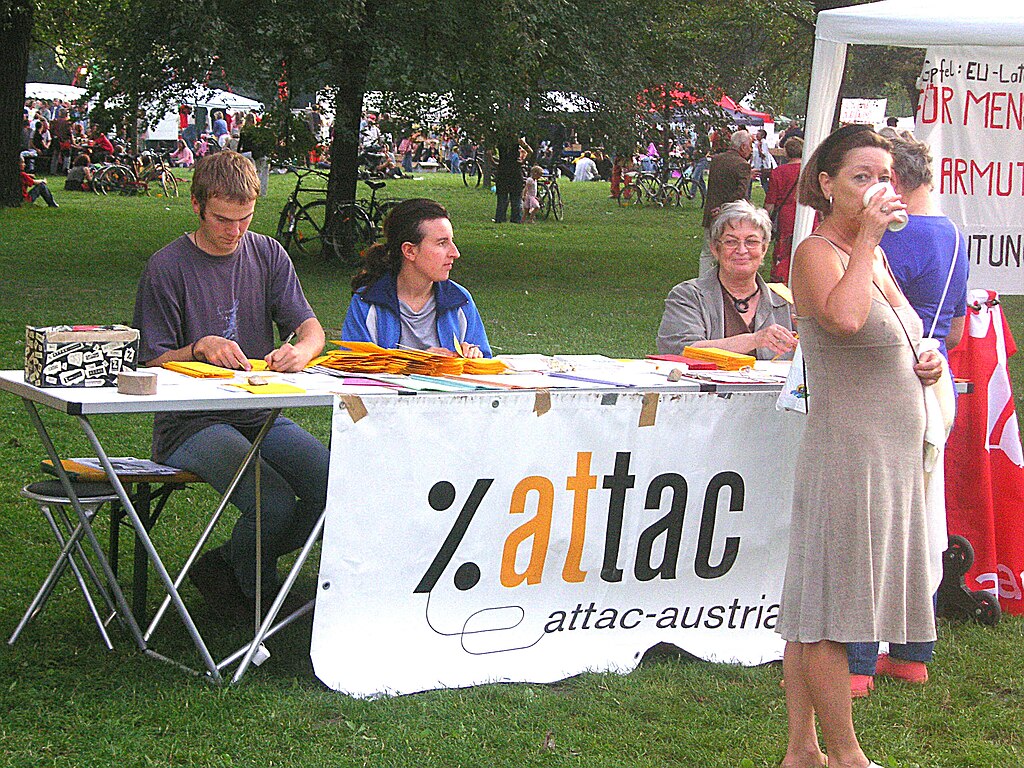
An ATTAC stall at the Volksstimmefest, Vienna, Austria, 2005 (Licensed under the Public Domain)
Apart from the Tobin tax, ATTAC advanced three other propositions at the World Social Forum: the reform of the World Bank and IMF; a global commission to slow down multinationals and increase competition; and “a procedure of mediation for countries of the ‘Third World’ in debt, where creditors and debtors should name their representatives and who then have to come to an agreement in regard to an arbitrator“. All this was to be achieved through “dialogue” with governments and international institutions like the Fund and Bank.[13]
This understanding is also reflected in the work of one of ATTAC’s leading lights, Susan George, who argues against a write-off of the Third World debt, and instead for its “creative” renegotiation. She indeed defends the institution of the IMF: “Should the South seek to replace or abolish the IMF? Even if such a Herculean feat were possible, this strikes me as the wrong goal, precisely because the Fund is supra-national and because it is an instrument. If enough pressure and political skill were applied, it could become an instrument for governments more enlightened than that of the United States under Reagan.”[14] While the intellectuals of ATTAC prominently occupied platforms and press conferences at each major post-Seattle protest, their actual politics starkly contrasts that of the protesters who called for writing off the Third World debt or “smashing the IMF”.
Nor does ATTAC have much in common with the traditional trade union goal of defending jobs. In a May 2001 document (The rules of the new shareholding capitalism), ATTAC upholds the right of the sack: “Clearly, the right to capitalist property includes the right to hire and fire. The question is knowing up to what point. As far as we are concerned, we want job-cuts to be the last resort, once all other possibilities of guaranteeing the survival of the company have been exhausted.”[15]
For ATTAC the militant anti-‘globalisation’ protests failed in a crucial sense: they lacked the ‘constructive’ development of ‘alternatives’. According to Christophe Aguiton of ATTAC, “The failure of Seattle was the inability to come up with a common agenda, a global alliance at the world level to fight against globalisation”.[16] Hence the need for WSF. Says Bernard Cassens, the first president of ATTAC, “We are not just protesters, our ambition is to propose credible alternatives to show that another world is possible by once more putting the economy and finance at the service of society.”[17]
To whom were these alternatives to be proposed, in whose eyes were they to be “credible”? Evidently, to those in charge of the existing world. ATTAC has been courted by various European social democratic governments: “In September last year (2001) the French prime minister, Lionel Jospin, and the German chancellor, Gerhard Schröder, both facing closely fought elections in the near future, agreed to set up a joint working party on how to regulate financial markets. The leadership of ATTAC France have held several meetings with Jospin’s chief of staff. The French National Assembly passed a resolution in November supporting the Tobin tax on international financial speculation. Perhaps because of this courtship, the ATTAC leadership did not mobilise its considerable influence against the war in Afghanistan. This courtship will continue at Porto Alegre. Among the notables present will be Danielle Mitterrand, widow of the former French president.”[18] It is alleged that at various forums ATTAC have intervened to exclude discussion of issues such as Iraq and Afghanistan, and prevent discussion of state racism, immigrant rights, and explicit references to fascism and Islamophobia.[19]
Indeed ATTAC sees no wrong in receiving funds from ruling quarters in Europe. The French business daily Les Echos (10/1/02) reported that “Last year ATTAC received 300,000 Euros in grants alone. Among the contributors were the European Commission (of the EU), the French government’s Department of Social Economy, the National Ministry of Education and Culture and a whole host of local governments.” According to the daily Le Monde (1/2/02), “ATTAC and Le Monde Diplomatique received 80,000 Euros from the French Ministry of Foreign Affairs to help them organise the World Social Forum.” Les Echos (1/2/02) comments accurately that “The financing of the NGOs, whose role is not always transparent, often comes from multinational corporations who prefer to back them discreetly so as to be able to use them for their own purposes. It would appear that these are two opposing ideologies. In fact, more and more these ideologies are becoming intertwined.”[20]
Of course, ATTAC’s construction experts ignore the fact that a genuine alternative cannot merely be mounted on top of the existing structure, but must be preceded by clearing away the burden of the past.
Workers’ Party: instrument of IMF rule
The other important force initiating the WSF, the PT of Brazil, can hardly be termed an opponent of globalisation. When the first three WSF meets took place, the PT was in power only in one province of Brazil, Rio Grande de Sul, whose capital is Porto Alegre. At the time it was celebrated for its “Participatory Budget” process. In this, an assembly would be held of associations representing various sections of society — including trade unions, NGOs, and employers’ associations. First, from the funds available, the amount required for the province’s contribution towards servicing the foreign debt would be subtracted. Then discussion would begin on how to spend the remainder, with each association allowed time to speak to ask for funds for its concern, and a vote at the end on all the proposals. None of the priorities may be funded, if there are not sufficient funds for them.[21] Clearly such a procedure has nothing to do with opposing ‘globalisation’. What it does is to set various exploited social sections against one another and dissipate resentment for Bank-Fund austerity measures. Indeed the IMF publication Finance and Development, edited by the World Bank’s Chief Economist, praises the PT’s “participatory budget” as helping to “reduce the administrative and social constraints on economic activity and social mobility”.[22]
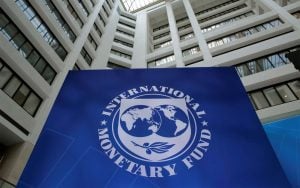
Now that the PT has been elected to power at the national level, its anti-‘globalisation’ pretensions have been dropped. In order to “confront the fear that had taken hold of investors, both foreign and Brazilian” before his election, “Lula [Luis Ignacio Silva, the head of the PT and now the president of Brazil], in a ‘letter to the Brazilian people,’ had committed himself during the campaign to maintaining the budget surpluses required by the IMF. When he took office, he not only did this, but he went further and surprised Wall Street by increasing the budget surplus from 3.5 percent of GDP to 4.6 percent” — a remarkable extraction from a poverty-ridden economy in recession. Unsurprisingly, “Officials at the IMF and World Bank in Washington have praised the stringent fiscal orthodoxy imposed by the new government.” For the critical position of president of the Central Bank, Lula appointed Henrique Meirelles, the former president of global banking at FleetBoston Financial, and “well known in US financial circles.” International investors are reassured: Since Lula took office on January 1, 2003, Brazil has received some $5.6 billion in foreign investment.[23] Lula has also kept a distance from Venezuela’s Hugo Chavez, one Latin American leader who is disliked by international capital.
As Brazil continues to service its debt and attract foreign capital, its basic interest rate, at 26.5 per cent, strangles domestic investment: interest now accounts on average for 14 per cent of the cost of production in Brazil and as much as 25 per cent in the steel and auto-parts industry. More than a third of the population is officially considered poor, and 15 per cent destitute. “Unemployment in the greater São Paulo region, Brazil’s industrial and financial heartland, has risen to over 20 percent. Brazil’s economic policy makers remain under IMF surveillance, obliged to make payments on the $30 billion of IMF loans that the previous government negotiated, which gives very little space for the economy to grow.” Brazil’s policymakers now talk the language of the IMF: “If budget surpluses can be sustained, once growth picks up next year, as they anticipate it will, they believe that they will at last be able to shift surpluses from paying debt and toward social development, education, health, and improving roads and other infrastructure.”[24] It is elementary that a policy of extracting budget surpluses can only contract economic activity, making the possibility of social development even more remote.
Little wonder that “Some of the left-wing members of the PT were openly criticizing [Lula], and the party leaders were threatening the most acerbic critics with expulsion if they voted against the government’s reform measures.” The left-wing members would have contrasted Lula’s present positions with his words to the Havana Debt Conference in 1985:
” Without being radical or overly bold, I will tell you that the Third World War has already started — a silent war, not for that reason any the less sinister. This war is tearing down Brazil, Latin America and practically all the Third World. Instead of soldiers dying there are children, instead of millions of wounded there are millions of unemployed; instead of destruction of bridges there is the tearing down of factories, schools, hospitals, and entire economies…. It is a war by the United States against the Latin American continent and the Third World. It is a war over the foreign debt, one which has as its main weapon interest, a weapon more deadly than the atom bomb, more shattering than a laser beam….”[25]
The context of class struggle in Latin America
Indeed the emergence of the WSF needs to be seen against the background of not only the upsurge of militant protests against the world’s leading financial institutions and bodies. It must also be seen against the great wave of struggles of workers and peasants sweeping Latin Americasince the Mexican Zapatista uprising of 1994, and more particularly in the last few years: a flowering of other movements on the land question in Mexico inspired by the Zapatista uprising, many of them armed; an extended and political Mexican student movement; the continuing guerrilla war led by FARC and ELN in Colombia; the continuing guerrilla war in Peru; a near-insurrection in Ecuador against IMF-imposed policies, resulting in the fall of a government; mass mobilisations in support of the Chavez government in Venezuela, in defiance of the Venezuelan elite and US imperialism; the militant direct occupation of land by the Movement of the Landless (MST) in Brazil; the remarkable Argentinian popular uprising and occupation of factories and sites of political power in 2001-02 in defiance of international investors, forcing repeated defaults of payments on the foreign debt; the Bolivian anti-privatisation struggles, including the successful struggle of Cochabamba against the privatisation of water; and others. Thus Latin America has become in recent years a particularly important zone of class struggle in the world, in confrontation with international capital. Many of these struggles have been spontaneous or led by amorphous forces, in search of political moorings and a vision of the future. Hence the importance for international capital of channeling them, too, along the `constructive’ paths charted by organisations like ATTAC.
So it was that, in 2002, the Porto Alegre municipality provided approximately $300,000 and the Rio Grande do Sul state government (under which the municipality falls) another $ one million for the WSF, despite their austerity regime. In 2003, there was some increase in the money provided by the municipal government and a substantial cut in the money given by the state government (as a result of PT losing the state elections). However, the new PT federal government, headed by Lula, decided to compensate for the cut by the state government.[26] ATTAC channeled European Union funds for the setting up of the WSF, and it is itself a recipient of European Union and French government funding (see Appendix II for details). Apart from this, other WSF funders (or ‘partners’, as they are referred to in WSF terminology) included Ford Foundation, which we will discuss later in this article — suffice it to say here that it has always operated in the closest collaboration with the US Central Intelligence Agency and US overall strategic interests; Heinrich Boll Foundation, which is controlled by the German Greens party, a partner in the present German government and a supporter of the wars on Yugoslavia and Afghanistan (its leader Joschka Fischer is the German foreign minister); and major funding agencies such as Oxfam (UK), Novib (Netherlands), ActionAid (UK), and so on.
Remarkably, an International Council member of the WSF reports that the “considerable funds” received from these agencies have “not hitherto awakened any significant debates [in the WSF bodies] on the possible relations of dependence it could generate.” Yet he admits that “in order to get funding from the Ford Foundation, the organisers had to convince the foundation that the Workers Party was not involved in the process.”[27] Two points are worth noting here. First, this establishes that the funders were able to twist arms and determine the role of different forces in the WSF — they needed to be ‘convinced’ of the credentials of those who would be involved. Secondly, if the funders objected to the participation of the thoroughly domesticated Workers Party, they would all the more strenuously object to prominence being given to genuinelyanti-imperialist forces. That they did so object will be become clear as we describe who was included and who excluded from the second and third meets of the WSF.
The WSF Charter
The charter of the WSF[28] describes the Forum opaquely as “a permanent process of seeking and building alternatives”, “an open meeting place for… groups and movements of civil society that are opposed to neoliberalism and to domination of the world by capital and any form of imperialism”, a “plural, diversified, non-confessional, non-governmental and non-party context”, and so on. However, the charter bars the WSF from any meaningful action. “The meetings of the WSF do not deliberate on behalf of the WSF as a body…. The participants in the Forum shall not be called on to take decisions as a body, whether by vote or acclamatiion, on declarations or proposals for action that would commit all, or the majority, of them…. It thus does not constitute a locus of power…” Thus the WSF organisers have strenuously and successfully resisted taking a stand on even such a glaring issue as the US invasion of Iraq.
The WSF’s diversity has its limits. Some groups of “civil society”— or of the people, to use a clearer term — are to be excluded: “Neither party representations nor military organizations shall participate in the Forum.” (The April 2002 Bhopal declaration of Indian organisations constituting WSF-India says that “The meetings of the World Social Forum are always open to all those who wish to take part in them, except organisations that seek to take people’s lives as a method of political action”.[29]) Thus any struggle which defends or advances its cause by use of arms would be barred: for example, had the Vietnamese liberation struggle existed today it would not be able to attend the WSF, even were it to wish it; nor would today’s Palestinian or Iraqi resistance fighters. Examples can easily be multiplied.
Yet the same charter states that “Government leaders and members of legislatures who accept the commitments of this Charter may be invited to participate in a personal capacity.” (The Bhopal declaration of WSF India emphasises that the WSF does not intend “to exclude from the debates it promotes those in positions of political responsibility, mandated by their peoples, who decide to enter into the commitments resulting from those debates.” In other words, they are not participating in their “personal capacity”, but in their official capacity.[30]) Given that these persons are leaders of political parties, and given that as heads of state they lead military organisations, this would seem to negate the earlier clause banning party representations or military organisations.
Clearly the objects of the two clauses are different. The first is intended to block certain ‘undesirable’ radical parties and their fighting forces. The second is to ensure the presence of representations from the very governments carrying out globalisation.
While barring the participation of armed organisations, the WSF Charter mentions that it will “increase the capacity for non-violent social resistance to the process of dehumanization the world is undergoing and to the violence used by the State.” (emphasis added) So the world is being dehumanized as a result of the intensification of exploitation; states are employing violence to accomplish this; yet resistance must be non-violent; failure to maintain non-violence will bar one from attending WSF gatherings.
On the other hand, the question of funding does not even figure in the charter of principles of the WSF, adopted in June 2001. Marxists, being materialists, would point out that one should look at the material base of the forum to grasp its nature. (One indeed does not have to be a Marxist to understand that “he who pays the piper calls the tune”.) But the WSF does not agree. It can draw funds from imperialist institutions like Ford Foundation while fighting “domination of the world by capital and any form of imperialism”. Indeed, the WSF Charter makes clear that it is opposed to all “reductionist views of economy, development and history”, meaning, presumably, Marxist analysis.
WSF 2001, 2002, 2003
The actual gatherings of the World Social Forum in 2001, 2002, and 2003 were marked by a sharp contrast. On the one hand there was the vibrant presence of masses of people — 5,000 registered participants and thousands of other Brazilian participants at the first event; 12,000 official delegates and tens of thousands of other participants at the second; and 20,000 delegates, at the third, which had a total attendance of 100,000.
One report describes how, at the meets, “Bank employees distributed leaflets with the title ‘all bankers are thieves’ and burnt dollar and euro banknotes. Metal and oil workers called for international solidarity with the Palestinians. In the morning the organisation of the homeless people occupied a building, which the city council had promised to convert into state-subsidised flats a year ago.”[31]
There was a diversity similar to that of the anti-‘globalisation’ protests, ranging from workers, peasants and students to environmentalists, anti-debt campaigners, and NGOs. But the new addition was high-powered officers of international institutions, academics, and politicians. James Petras writes of the second WSF meet:
“The Forum was sharply polarized. On one side were the reformers — the NGO’ers, academics and the majority of the organizers of the Forum, ATTAC-Tobin tax advocates from France and leaders from the social-liberal wing of the Brazilian Workers Party. On the other side were the radicals from the Brazilian Landless Workers Movement, activist intellectuals, piqueteros from Argentina, representatives of left-wing parties, trade unions, urban movements and solidarity groups. There were significant differences in the social composition of the meetings and the public demonstrations. At the opening inaugural march, run by the reformist officials, the marchers were from a diverse array of groups. The unofficial march of 50,000 against the Latin American Free Trade Agreement was organized by the radical groups and included a large contingent of Brazilian workers, peasants and homeless, as well as militant internationalists from ongoing struggles in Argentina, Bolivia and other countries.”[32]
Naomi Klein notes that, while “any group that wanted to run a workshop… simply had to get a title to the organizing committee”, “there were sometimes sixty of these workshops going on simultaneously, while the main-stage events, where there was an opportunity to address more than 1,000 delegates at a time, were dominated not by activists but by politicians and academics.”[33] Petras agrees: “It was the well-known intellectual notables from the NGOs which crowded the platforms and informed the public about the movements in their regions… The official plenary sessions and `testimonials’ were heavily biased in favour of NGO’ers and intellectuals, while the parallel workshops and seminars were the occasional site of fruitful exchange among activists from substantial movements engaged in the significant battles against imperialism (‘globalization’).”
Who was included
Despite the WSF Charter’s prohibition of political parties, Lula, head of the PT and now head of the federal government of Brazil, prominently participated at all three WSF meets. For that matter the PT, the ruling party at the local and now national level, has been omnipresent at the WSF meets. And Lula, as part of his new presidential responsibilities, traveled straight from the WSF 2003 to Davos, to participate in the World Economic Forum meet. Thus it is possible to take part in both forums.
It is worth looking at the credentials of some of the other participants at the WSF. The French government — still more or less a colonial ruler in parts of Africa — has sent high-level delegations to the WSF, containing several cabinet ministers. Among those whom the organising body of WSF presumably considers “accept the commitments” of its charter were the French minister of cooperation (directly responsible for dealing with the foreign debt of the African countries — in particular former French colonies), the minister of housing, the minister of education, and so on. Also present at the WSF was a top-ranking delegation of the United Nations, a body in whose name several heinous wars have been fought since 1991. A special message from UN Secretary General Kofi Annan was read out at the WSF — as it was also in the World Economic Forum at Davos.
At any rate the bar on political parties is selective: any number of representatives of political parties attend in their “individual capacities”, and even hold important positions in the WSF bodies. The bar is actually an enabling provision, to keep out those the organisers wish to keep out.
Even some prominent representatives of the WSF have been embarrassed by the contradiction. According to Jose Luis del Rojo, the Italian coordinator of the WSF: “We have a problem. There are several thousand politicians present, many of whom are members of parliament, mainly from Europe, who voted for the US war against Afghanistan. Many of these had declared themselves to be against our movement. And now they are all here, giving interviews to the international press…We have problems especially with the French and Italian members of parliament. For example, there is the secretary of the Left Democrats from Italy, Piero Fassino, who spoke strongly in favour of Italy entering this war. These are the same people, who in Genoa, while the police was beating us up, called upon the population not to join the demonstration, in order to isolate us and leave us in the hands of the repressive state apparatus…This should be a Forum of local government politicians, but here we have prefects from Europe taking part. These people in their municipalities and regions have expelled immigrants. All this has nothing to do with our principles.”[34]
Of the German delegation, “The majority was made up of Non-Governmental Organisations (NGOs), like the Evangelische Entwicklungsdienst(Protestant Voluntary Service Overseas). The bulk of the delegation was formed by foundations linked to political parties, such as the Friedrich-Ebert-Stiftung (Friedrich Ebert Foundation) with a total of 19 delegates, the Rosa-Luxemburg-Stiftung (Rosa Luxemburg Foundation) with 9 delegates, the Heinrich-Böll-Stiftung (Heinrich Böll Foundation) with 2 delegates and the DGB (German Federation of Trade Unions) with 7 representatives.”[35]
An International Council member notes that certain UN organs were actively involved in the WSF despite the bar on intergovernmental bodies. “In order to partially overcome such dilemmas, a new form of participation was attempted in 2002 when it was decided that the WSF would have a new category of events: roundtables of dialogue and controversy. Through these roundtables, representatives of institutions banned from the list of official delegates can be invited to debate and discuss.”[36]
NGOs are major recipients of financing from the very institutions that the WSF is purportedly fighting. “For the last decade”, said the World Bank president to the WSF 2003, “we have held an active dialogue with the organisations of civil society, including through the projects that we are financing.” Thirteen per cent of the World Bank’s loans to various governments have to be channeled to finance the “participation” of NGOs. On this account, in 2001, the borrowing countries were indebted for a neat $2.25 billion to the World Bank[37]. The NGOs in turn do their political bit for the Bank and Fund. The Economist notes that “The IMF, long regarded as impermeable to outsiders, now runs seminars to teach NGOs the nuts and bolts of country-programme design, so that they can better monitor what the Fund is doing and (presumably) understand the rationale for the Fund’s loan conditions. Horst Kohler, the IMF’s new boss, has been courting NGOs. Jim Wolfensohn, the Bank’s boss, has long fawned in their direction, but in the Bank too the pace of bowing down has been stepped up…. Mark Malloch Brown, the administrator of the United Nations Development Programme, has gone further. He has a board of NGOs (including some fairly radical ones) to advise him…”
While the bulk of the participants at the WSF were Brazilian (67 per cent at WSF 2002), the largest non-Brazilian representation was of those who had funds, or who could be sponsored by those who had funds — not social movements, but NGOs and parliamentary parties. Inevitably, the bulk of the deliberations were `constructive’ in the sense that ATTAC uses that word. The ‘dialogue’ with the powers that rule the world has begun. World Bank president James Wolfensohn closed his message to the WSF 2003 with these words: “My colleagues and I have followed the debates of the last two World Social Forums, and we will discuss with interest the ideas and proposals that will emerge this year… We can work together much more closely.”[38]
Who was excluded
While NGOs and political leaders of the existing system flooded the city’s five-star hotels, there were significant absences at the WSF. Given the charter’s bar on “political parties” and “military organisations”, it was inevitable that popular insurgencies would be barred from participation by the organisers of the WSF. “During the first WSF, FARC [the Revolutionary Armed Forces of Colombia, who have been carrying on a long-standing armed struggle against the Colombian government; they are the main target of the US’s massive Plan Colombia] received a lot of sympathy from some participants. In Brazil, relatively strong anti-US sentiments are often reflected in solidarity attitudes towards Colombian rebels. Unofficial moves were even afoot to recruit internationalist brigades to travel to Colombia.”[39] However, for the second and third WSF meets, FARC representatives were not allowed to register as participants. The Zapatista fighters of Mexico, one of Latin America’s most prominent anti-‘globalisation’ movements, too were excluded, presumably because they, like FARC, are an armed force.
The Cuban delegation too at WSF 2002 was not given an official status, nor given a prominent role. Venezuelan president, Hugo Chavez, battling intense US efforts at overthrowing his elected government, was not invited to WSF 2003. When he turned up nevertheless, he was not accorded space within the official Forum, despite his evident popularity among the participants.
Equally significant is the exclusion of an unarmed organisation, the Madres de Plaza de Mayo, an organisation of the mothers of those ‘disappeared’ by the Argentinian military dictatorship of 1976-83. The MST (the Brazilian Movement of the Landless), although formally on the Brazilian Organising Committee of the WSF, was unable to do anything about this exclusion of the Madres — a sign of who really calls the shots. The MST could only send an invitation to the Madres to attend in their personal capacity, along with an air ticket for the head of that organisation, Hebe Bonafini. We reproduce excerpts here from her speech at a mass rally in Buenos Aires, Argentina, after the WSF 2002:
“Comrades:
“We were in Porto Alegre on the occasion of the Second World Social Forum (WSF). More than 50,000 participated in this weeklong event. There were large numbers of people from all over the world, including thousands of youth.
“There were three different levels to this WSF. First, there were the small gatherings of those who were in charge, controlling things. They were led by the French, mainly from an association called ATTAC, and by others from a few other countries.
“Then there were all the commissions and seminars, where all the intellectuals, philosophers and thinkers participated.
“And then there were the rank-and-file folks. We participated at that level, and we discussed with all sorts of people. But the fact is that we were brought to the WSF so we could listen — not so the rank-and-file could participate.
“Fidel Castro was not invited to participate and nor were the FARC. That’s a shame. Nor were the Mothers of the Plaza de Mayo invited.
“I went to Porto Alegre because I was invited in a personal capacity by the Landless Peasants Movement of Brazil, the MST. And it was important that I was there, because I, along with a few others, was one of the first ones to put forward our sharp criticisms of this World Social Forum.
“We said that ‘Social Democracy’ and ‘socialism’ are not the same thing. We said that the European Social Democracy had taken over and appropriated this WSF. We said that the French organizers [i.e., ATTAC] and their cohorts could, of course, participate in this process, but that they should not control it.
“We said that in our view, people had flocked to this WSF to fight and organize against globalization only to find out, when they arrived, that the organizers had staged the event so that all we were supposed to be talking about was ‘putting a human face’ on globalization.
“The people I spoke to heard a different message: I told them, in relation to Argentina, that we, the Mothers of the Plaza de Mayo, had taken over the Plaza de Mayo — which is just in front of the President Palace in Buenos Aires — 25 years ago.
“And I said that today, taking up where we left off, hundreds of thousands of people are assembling regularly and are bringing down the new wave of country-selling presidents.”[40]
Democracy at the WSF
Who decides who is to be invited and who not? While the WSF makes much of its commitment to openness and democracy, in fact its structure is opaque and undemocratic. According to Teivainen, an International Council member, “Formal decision-making power has been mainly in the hands of the Organising Committee (OC), consisting of the [PT-affiliated] Central Trade Union Confederation (CUT), the MST and six smaller Brazilian civil society organisations”. Of those six smaller “civil society organisations”, five are funded NGOs (Brazilian Association of NGOs; ATTAC; Justice and Peace Brazilian Committee; Global Justice Centre; and Brazilian Institute of Social and Economic Analysis (IBASE). Teivainen points out that although CUT and MST are much larger in terms of membership, “Some of the participating Brazilian NGOs have better access to financial resources: for example, IBASE, a Rio-based research institute, has been an important fund-raiser for the WSF.”[41]
The International Council for the WSF was founded in June 2001, and currently has 113 organisations (including the eight Brazilian OC members), though in practice many of them do not actively participate. As yet there is no clear division of labour and authority between the BOC and the IC. At any rate, as Teivainen, himself one of the IC members, states, “the WSF does not have internal procedures for collective democratic will-formation”.
Whether democratically or not, decisions are taken. The WSF structure is, we are told, “horizontal” — a large number of groups interacting without any centralising force. In fact, however, some force decides who will be invited and who not; who will be given prominence at the plenary sessions and press meets, and who will be consigned to the oblivion of a workshop. A “vertical” structure has scope for communication and representation from below to the top, whereas a pseudo-horizontal structure has scope for only top-down decisions by an inaccessible body — there is no scope for representation of the mass. Naomi Klein, a writer sympathetic to the mission of the WSF, writes: “The organizational structure of the forum was so opaque that it was nearly impossible to figure out how decisions were made or to find ways to question those decisions. There were no open plenaries and no chance to vote on the structure of future events. In the absence of a transparent process, fierce NGO brand wars were waged behind the scenes — about whose stars would get the most airtime, who would get access to the press and who would be seen as the true leaders of this movement.”
Hardly surprising, then, that the WSF sessions (as well as the Asian Social Forum held in January 2003 in Hyderabad) are being confronted by demonstrations outside their sessions. Twenty office-bearers of Brazilian unions (including of CUT) distributed an “Open Letter” to the WSF 2002, questioning the WSF, exposing the role of NGOs, and asking, “Is it possible to put a human face on globalisation and war?”[42] Klein mentions how “the PSTU, a breakaway faction of the Workers Party, began interrupting speeches about the possibility of another world with loud chants of `Another world is not possible, unless you smash capitalism and bring in socialism!”
No less than three World Social Forums have taken place; they are only the beginning. The World Social Forum is a “permanent process”, one that is to spread to new parts of the world — the next “open meeting place” is to be held in India, and thereafter, presumably, in other uncharted lands. If one could quantify discussion, unprecedented quantities have been generated by the first three meets. Yet, in stark contrast to the movement to which it traces its birth, the WSF has not yielded a single action against imperialism. As its charter states, it is not a locus of power. However, in entangling many genuine forces fighting imperialism in its collective inaction, the WSF serves the purpose of imperialism.
Endnotes
1. Thanks are due to Jacob Levich, who helped with the research.
2.Their exaggerated concern about the destruction of a few shop fronts and automobiles is matched by their silence on the devastation of the living standards of Russia, much of eastern Europe and the Balkans, southeast Asia, Argentina, Mexico, Brazil and other countries during the last decade caused by the international financial institutions.
3. 23/9/2000.
4. FAIR — Fairness & Accuracy in Reporting — “Media Advisory: Media Missing New Evidence about Genoa Violence”, 10/1/03.
5. FAIR, ibid.
6. “USA: Seattle WTO Protests Mark New Activist Age”, AP, 25/11/2000.
7. 23/9/2000.
8. “How Not to Fight Globalization?”, Alan Benjamin, The Organizer, /www.theorganizer.org/to/to_nd-3.htm.
9. Benjamin, op cit; emphasis added.
10. Teivo Teivainen, “World Social Forum: What should it be when it grows up?”, www.opendemocracy.net/debates/article-3-31-1342.jsp
11. Benjamin, op cit; emphasis added.
12. All quotations from Benjamin, op cit; emphasis added.
13. “Second World Social Forum in Porto Alegre: Is another world possible?” www.marxist.com/Globalisation/wsf2_porto_alegre.html, translated from the Austrian Marxist magazine Der Funke.
14. A Fate Worse Than Debt, 1988, p. 226; emphasis added.
15. quoted in La Verite, no. 32, Spring 2003, theoretical magazine of the Fourth International.
16. Naomi Klein, “A Fete for the End of History”, The Nation, 19/3/01; emphasis added.
17. La Verite, ibid.
18. “Parliament of the People”, Alex Callinicos, February 2002.
19. “European social forum: ATTAC pulls movement to the right”, Workers Power Global, 3/11/02.
20. all quotations from www.theorganizer.org/ilc/wsf2-report.htm
21. Benjamin, op cit.
22. cited in La Verité, op cit.
23. “Lula’s surprise”, Kenneth Maxwell, New York Review of Books 3/7/03.
24. Maxwell, op cit; emphasis added.
25. A Fate Worse than Debt, p. 234.
26. Teivainen, op cit.
27. Teivainen, op cit; emphasis added.
28. “”World Social Forum Charter of Principles”, www.wsfindia.org/charter.htm.
29. www.wsfindia.org/backend/doc_files/IndiaPolicyGuideline.doc.
30. See www.wsfindia.org/backend/doc_files/IndiaPolicyGuideline.doc
31. “Second World Social Forum in Porto Alegre: Is another world possible?”, cited above.
32. “Porto Alegre 2002: A tale of two forums”, www.rebelion.org.
33. Klein, op cit.
34. “Second World Social Forum in Porto Alegre: Is another world possible?”, cited above; emphasis added.
35. ibid.
36. Teivainen, op cit; emphasis added.
37. La Verité, op cit.
38. cited in La Verité, op cit.
39. Teivainen, op cit.
40. reproduced from www.theorganizer.org/ilc/wsf2-report.htm; emphasis added
41. IBASE is, indeed, a large Brazilian NGO, with a budget of $5.6 million by 1996. Patterned by its founders explicitly along the lines of the Institute for Policy Studies, Washington, over the years it has drawn large funds from foreign institutions, including NOVIB and Ford Foundation. It gathers substantial contributions from Brazilian big business; indeed it has extensive business activities of its own, including as an internet service provider — funds for which were generated largely by a Ford Foundation loan — see www.oneworld.org/ecdpm/anniv/fingrz.htm. IBASE has also collaborated with the UN in several projects.
42. globalresearch.ca/articles/BTU202A.html
Part II
.
WSF Mumbai 2004 and the NGO Phenomenon in India
Buoyed by the success of the Porto Alegre meets, the WSF organisers have been trying systematically to expand the Forum’s influence even further. In the course of the last year they have organised an Argentina Social Forum meet in Buenos Aires, a European Social Forum in Florence, a Palestine Thematic Forum in Ramallah (on “negotiated solutions for conflicts”), an Asian Social Forum in Hyderabad, and an African Social Forum in Addis Ababa. It is as part of this “internationalisation” process that the WSF bodies (the Brazilian Organising Committee and the International Council) decided to hold the next WSF gathering not in Brazil, but in India.
The holding of the “Asian Social Forum” at Hyderabad on January 2-7, 2003, confirmed that such an event could be successfully held in India. Large funds were mobilised from foreign funding agencies for this event too, including from Ford Foundation, which is, as we have seen, one of the major funders of the WSF.
Just as in Brazil the WSF was initiated by ATTAC and PT, in India the WSF meet is being organised by an alliance of non-governmental organisations and leading cadre from certain political parties — in the main, the Communist Party of India (Marxist) and the Communist Party of India, along with their mass organisations of workers, students, peasants, and women. Certain mass organisations with close ties to NGOs are also involved. While these are the forces taking the initiative to organise the meet, and which are able to provide the full-time manpower to do so, a large number of other forces and individuals are likely to join the proceedings in one way or another, either as organisers of discussions or simply as participants.

ASF main venue (Licensed under CC BY-SA 2.5)
Large requirement of funds
The foreign funding here, as in Porto Alegre, is of two types: first, the infrastructural funding which comes to the WSF central bodies; secondly, the funding for various participating organisations, which is much larger, but which is near-impossible to trace.
As for the first, the “Part Funding Policy” as adopted by the India General Council of the WSF at its April 7-8 2003 meeting at BTR Bhawan in Delhi, “Maximum international funds [are] to be raised and managed by IC/BOC (International Council/Brazilian Organising Council) as per their policy”. No principle is laid down here for what type of sources may be tapped, just as the WSF Charter is silent on this score. Apart from this, the Part Funding Policy says that “NRI’s [and] organisations other than funding organisations and individuals may be approached for contribution to solidarity fund.” The document “Project World Social Forum 2004” (World Social Forum Secretariat — Brazilian Organising Committee and Indian Organising Committee) estimates that $2.5 million will have to be raised.
However, as mentioned above, this does not capture the full role of funding agencies. In fact “Project World Social Forum 2004” estimates total expenditure for the event at $29.7 million (about Rs 135 crore), the bulk of which, $26.2 million, is the cost of the delegates’ participation (transportation, accommodation and food). Funding agencies would bear much of this cost, since an army of NGO functionaries and employees would be attending — nearly all of the country’s foreign-funded NGOs would be present, as well as many from abroad. The visits of many important personages too would be sponsored by NGOs. However, these sums would be disbursed directly to delegates without entering the WSF Secretariat accounts. The amount provided by foundations/funding agencies directly to the WSF Secretariat is a small fraction of such funds actually involved in the WSF meet (see Appendix II for some examples of this).
The NGO sector in India
Let us turn, then, to the activities of the NGOs — one of the two main forces organising the WSF in India. In Appendix I, we have discussed Ford Foundation’s activities at length because of its role as funder of the WSF, and also as a case study of foreign funding. The broad pattern displayed by the Ford Foundation holds for the entire NGO sector in India.
There are a number of sincere individuals working in NGOs or associated with NGOs. Many such persons are moved by a desire to reach some immediate assistance to needy people. Seen in specific contexts, they do in fact reach some relief to sections of people. Without questioning the commitment and genuineness of such individuals, our concern here is to point to the broader political significance of the NGO institutional phenomenon.
The 1980s and 1990s witnessed an extraordinary proliferation of foreign-funded NGOs in India: according to the Home Ministry, by the year 2000 nearly 20,000 organisations were registered under the Foreign Contribution Regulation Act, though only 13,800 of them submitted their accounts to the government as required.[1] Total foreign funds received by these organisations rose from Rs 3,403 crore in 1998-99 to Rs 3,925 crore in 1999-2000 to Rs 4,535 crore (about $993 million) in 2000-01.[2]
Not a spontaneous social phenomenon
NGOs make out that they have spontaneously emerged from society, hence the earlier term ‘voluntary agency’ and the now-favoured term ‘civil society organisation’. In fact, however, international funding agencies (from which smaller NGOs in various countries in the third world receive their funds) depend heavily on funds from government, corporate and institutional sources. For example, according to the World Bank document “Report on Development: 2000-2001”, more than 70 per cent of projects approved by the World Bank in 1999 included the participation of NGOs and representatives of “civil society” — a single project aimed at bolstering NGOs over seven countries cost $900 million. The Bank assigned two of its functionaries to relations with NGOs and representatives of “civil society”; that figure has grown to 80 today. As for governmental support, another report puts funds to NGOs from advanced industrial countries other than the US at $2.3 billion in 1995; including the US, the figure would be much larger.[3] As one writer puts it, “These gigantic sums reveal the hoax of presenting the rapid growth of NGOs as a ‘social phenomenon’.”[4]
Why do multinational corporations, the imperialist governments, and institutions such as the World Bank and the United Nations channel such funds to NGOs?
Indeed the extraordinary proliferation of NGOs serves imperialism in a variety of ways.
1. NGOs, especially those working to provide various services — health, education, nutrition, rural development — act as a buffer between the State and people. Many States find it useful to maintain the trappings of democracy even as they slash people’s most basic survival requirements from their budgets. NGOs come to the rescue by acting as the private contractors of the State, with the benefit that the State is absolved of all responsibilities. People cannot demand anything as a right from the NGOs: what they get from them is ‘charity’.
Till the 1980s, NGO activity in India was limited to ‘developmental’ activities — rural uplift, literacy, nutrition for women and children, small loans for self-employment, public health, and so on. This continues to be a major sphere of NGO activity — in 2000-01, Rs 970 crore, or 21 per cent of the total foreign funds, was designated for rural development, health and family welfare; other ‘developmental’ heads would have added to this figure.
But in what context are these ‘developmental’ activities taking place? In the basic context of enormous, conscious suppression of development. Under the guidance of the IMF and World Bank, successive Indian governments slashed their expenditure on rural development (including expenditure on agriculture, rural development, special areas programme, irrigation and flood control, village industry, energy and transport; the figures are for Centre and states combined) from 14.5 per cent of GDP in 1985-90 to 5.9 per cent in 2000-01.[5] Rural employment growth is now flat; per capita food grains consumption has fallen dramatically to levels lower than the 1939-44 famine; the situation is calamitous. Were expenditure by Centre and states on rural development to have remained at the same percentage of GDP as in 1985-90, it would not have been Rs 124,000 crore in 2000-01, but Rs 305,000 crore, or more than two and a half times the actual amount.
In comparison with this giant spending gap, the sums being spent by NGOs in India are trivial. But, by their presence, the notion is conveyed all round that private organisations are stepping in to fill the gap left by the State. This is doubly useful to the rulers. The political propaganda of ‘privatisation’ is bolstered; and, as said before, people are unable to demand anything as their right. In effect, NGO activities help the State to whittle down even the existing meagre social claims that people have on the social product.
Thus NGOs are multiplied fastest where State policies — usually as part of an IMF/World Bank-directed policy — are withdrawing basic services such as food, health care, and education. The greater the devastation wreaked by the policy, the greater the proliferation of NGOs sponsored to help the victims. (Indeed, before the US prepares to invade a country, it funds and prepares leading NGOs to provide ‘relief’ after it has rained destruction.[6] Thus in the second half of 2002 NGOs began cutting their spending on, and manpower deployed in, still-devastated Afghanistan — as part of their preparation to join the US caravan to Iraq.)
2. In the course of recruiting their manpower, the NGOs give employment and a small share of the cream to certain local persons. These persons might be locally influential persons, whose influence and operations then benefit the NGO. Or they might be vocal and restive persons, potential opponents of the authorities, who are in effect bought over. In either case, NGO employment, although tiny in comparison with the levels of unemployment in third world countries, serves as a network of local political influence, stabilising the existing order.
3. In the field of people’s movements, ‘activist’ or ‘advocacy’ NGOs help to redirect struggles of the people for basic change from the path of confrontation to that of negotiation, preserving the existing political frame. The World Bank explains in its “Report on Development” (cited above) its political reasons for promoting NGOs. It says: “Social tensions and divisions can be eased by bringing political opponents together within the framework of formal and informal forums and by channeling their energies through political processes, rather than leaving confrontation as the only form of release.”[7] Thus ever since the early seventies Andhra Pradesh, a state with a strong tradition of revolutionary movements, has witnessed a massive proliferation of NGOs, and is indeed among the states receiving the maximum foreign NGO funds today.
NGOs bureaucratise people’s movements. Traditionally, people’s movements are self-reliant: they have to raise their own resources, and are led by representatives from among the people. These representatives, to one extent or another, thus have to be accountable to the people. By contrast, NGO-led movements, while claiming to represent the people, are led by officers of the NGOs, who are paid by funding agencies to carry on activity. Naturally, they are not accountable to the people, nor can they be removed by them; so they are also free to act without regard for people’s opinions. On the other hand, NGOs are accountable to their funders, and cannot afford to stray beyond certain bounds. Minus foreign and government funding, the entire NGO sector in India would collapse in a day.
Indeed, as NGOs proliferate and spread their wings, setting up funded adivasi organisations, dalit organisations, women’s organisations, ‘human rights’ organisations, cultural organisations, and organisations of unorganised labour, it is often NGOs that are the first to respond to any political or social issue — including ‘globalisation’ and its harmful effects. Political life itself is increasingly NGOised, that is, bureaucratised and alienated from popular presence and representation.
Ideological underpinnings
The foreign-funded NGO sector has, with remarkable uniformity, propagated certain political concepts. The first such, as we have mentioned in the case of Ford Foundation’s projects (see Appendix I), is the primacy of ‘identity’ — gender, ethnicity, caste, nationality — over class.
The ideological underpinnings, such as they are, of this trend are provided by what has come to be known as ‘post-modernism.’ This is an international intellectual current — now powerful, if not dominant, in social science academic institutions worldwide. Not its own strength as a school of thought, but the rich stream of funds and academic positions flowing to it, has ensured post-modernists institutional dominance — an echo of what Ford Foundation did in the 1950s.
Although ‘post-modernism’ is not really systematic thought, and so is difficult to pin down and refute, the following is an important strand of it, and the one that is relevant for the topic we are discussing here. This strand argues against any worldview which attempts (however approximately or tentatively) to comprehend all of reality in an integrated fashion. The post-modernists argue that such a worldview imposes its project on other realities. Instead, this strand posits that there are any number of realities, equally valid, and that the very tools of analysis for these realities differ.
Class analysis and post-modernism produce sharply contrasting analyses of social phenomena, which have sharply differing implications for the practice of social movements. Class analysis argues that, for example, the vast majority of women have an objective, material basis to join their movement with those of other sections (including dalits, adivasis, workers, and so on) in a struggle against the existing social order; that women’s liberation is tied up with (though a distinct sphere of) such a broader struggle; that male chauvinist attitudes of, say, male workers are against all workers’ own long-term interest; and that such attitudes have to be fought by making ruling class influences the target, not ordinary workers as such.
Post-modernism, however, considers such a view “reductionist” (the term used in the World Social Forum Charter). Rather, post-modernism places all struggles on par, with class as just another social category jostling with gender, ethnicity, nationality, and so on for attention. Post-modernism thus rules out the possibility of united action by various social sections on the basis of common objective interests; rather, it talks of varying coalitions/alliances of forces, joining hands to one extent or another for specific aims.
The post-modernist approach implies that members of the same coalition might be pitted against each other in some other respect — for example, male workers and women might join hands in a particular cause, but remain antagonists on gender issues. This in turn implies that no clear line can be drawn between the “camp of the people” and the camp of those who are responsible for exploitation and oppression of people. Both camps are open to all.
When male workers, who (in post-modernist eyes) are the target of struggle by women, can be part of the World Social Forum in which women’s organisations too participate, nothing need prevent industrialists from joining the Forum along with workers. Nothing, for that matter, prevents a UN delegation attending the Forum, or a prominent member of the Forum dashing off to attend the World Economic Forum as well. All of them — the workers and the capitalists, the protester and the World Bank functionary — are part of what the post-modernists call ‘civil society’. (Thus the April 2002 Bhopal declaration of WSF India clarifies that the WSF “must make space” not only “for workers, peasants, indigenous peoples, dalits, women, hawkers, minorities, immigrants, students, academicians, artisans, artists and other members of the creative world, professionals”, but also for “the media, and for local businessmen and industrialists, as well as for parliamentarians, sympathetic bureaucrats and other concerned sections from within and outside the state“. — emphasis added. The word “state” is used here in the sense of the organ of established political authority.)
The aim of class analysis is to strive for a social system worldwide which eliminates all exploitation and oppression. Whatever the specific and tortuous path the different contingents of humanity may have to traverse in different countries to get there, it is a common project of the people of the world.
Post-modernism rejects such an approach. Edward Herrman describes it succinctly as follows:
“An important element of the intellectual trend called ‘postmodernism’ is the repudiation of global models of social analysis and global solutions, and their replacement with a focus on local and group differences and the ways in which ordinary individuals adapt to and help reshape their environments. Its proponents often present themselves as populists, hostile to the elitism of modernists, who, on the basis of ‘essentialist’ and ‘totalizing’ theories, suggest that ordinary people are being manipulated and victimized on an unlevel playing field.”[8]
Emerging as a political ‘alternative’
Naturally, this school of post-modernism implies that no single political force can represent the common long-term interests of all sections of the people in a country. Along the same lines, NGOs and various funded intellectuals in India have since the early 1980s advanced the notion of a “non-party political process”. It is this understanding that lies behind the World Social Forum’s hypocritical bar on the participation of political parties.
If the bar on political parties were in order to allow mass organisations and mass movements to occupy centre stage, one could understand the rationale. In fact it is to the contrary. Political parties actually do take part in the WSF, appearing as ‘individuals’ — as can be seen by the leading role of PT in the Brazil WSF meets, and the droves of parliamentarians who attended those gatherings. The point here is the ideological concept that post-modernists/NGO theorists strain hard to propagate: Namely, that any single political force aiming to represent all sections of the people amounts to an imposition on the tapestry of different groups or ways of being.
Indeed, for those who run the existing order, it is vital to ensure the absence of any coherent political force which can integrate the myriad sections in opposition against that order.
While NGOs thus oppose the concept of a single political party leading various sections of the people, they themselves are emerging as a single political force in their own right. They have unanimity on most issues. Their explicitly political activities span a wide range of social sections: they run organisations of women, adivasis, dalits, unorganised workers, fishermen, and slumdwellers; they also run organisations for the protection of the environment, cultural organisations, and human rights organisations (indeed, much admirable work in providing relief to the victims of the Gujarat massacres, and documentation of the crimes there, has been done by NGOs).
Till now, however, NGOs by and large have not been treated as a legitimate political force by the traditional mass organisations — the trade unions, peasant unions, student organisations, women’s organisations. And it continues to be the case that the mass organisations command much greater capacity to mobilise masses of people. Through platforms such as the World Social Forum now, NGOs are being provided an opportunity to legitimise themselves as a political force and expand their influence among sections to which they earlier had little access.
CPI(M)’s earlier stand
One of the early critiques of NGO politics and practice in India was written in 1988 by an important CPI(M) activist, now a politburo member, Prakash Karat; it first appeared in the CPI(M)’s theoretical journal, The Marxist. Titled Foreign Funding and the Philosophy of Voluntary Organisations, the publication describes in some detail this phenomenon, and gathers various data and anecdotal information on the topic, and points to what it considers to be its dangers.
Karat stated his thesis in brief as follows:
“There is a sophisticated and comprehensive strategy worked out in imperialist quarters to harness the forces of voluntary agencies/action groups to their strategic design to penetrate Indian society and influence its course of development. It is the imperialist ruling circles which have provided through their academic outfits the political and ideological basis for the outlook of a substantial number of these proliferating groups in India. By providing liberal funds to these groups, imperialism has created avenues to penetrate directly vital sections of Indian society and simultaneously use this movement as a vehicle to counter and disrupt the potential of the Left movement…. The CPI(M) and the Left forces have to take serious note of this arm of imperialist penetration while focussing on the instruments and tactics of imperialism. An ideological offensive to rebut the philosophy propagated by these groups is urgently necessary as it tends to attract petty bourgeois youth imbued with idealism.” (pp 2-3)
Karat argued that the new seemingly ‘activist’ stance adopted by the NGOs was a sophisticated imperialist strategy: “…along with the funding for the second phase [ie of `activism’ by NGOs] came the ideological package also. For how else can one explain the strange spectacle of imperialist agencies and governments funding organisations to organise the rural and urban poor to fight for their rights and against exploitation?” (p. 8)
In the course of the critique Karat mentioned several of the same foundations which have been funding the World Social Forum and affiliated activities — ICCO-Netherlands; Friedrich Ebert Foundation; NOVIB; Ford Foundation; Canadian International Development Agency; and Oxfam. “It would be no exaggeration to say that the whole voluntary agencies/action groups network is maintained and nurtured by funds from western capitalist countries. The scale of funding and the vast amounts involved are so striking that it is surprising that this has not become a matter of urgent public debate in this country…. This open access to foreign funds allowed by the Government of India has become one of the major sources of imperialist penetration financially in the country.” (p. 34)
He ended with a call for political struggle:
“The Left should treat all action groups (ie those directly involved in mobilisation and organisation of the people) as political entities. All those organisations receiving foreign funds are automatically suspect and must be screened to clear their bonafides.” (p. 64)
“The widest campaign has to be built up to force the Government of India to abandon its present posture of allowing free flow of foreign funds on the grounds that it contributes to the foreign exchange fund. The Foreign Contribution Regulation Act which allows such massive penetration of imperialist funds will have to be further amended to ensure: All voluntary organisations which claim to organise people for whatever form of political activity should be included in the list of organisations (just as political parties) which are prohibited for receiving foreign funds…. Most urgent is the necessity for a sustained ideological campaign against the eclectic and pseudo-radical postures of action groups.” (pp 64-65)
Indeed, he proudly states that “it is well known that it is the CPI(M) cadres and activists who have been in the lead all over the country in exposing the designs of foreign-funded voluntary work as they are clear about its implications”. (p. 60)
Sharp turnaround
Such was the official CPI(M) stand in 1988. Drastic changes appear to have taken place since the end of the eighties. In a number of forums, CPI(M) members and NGOs now cooperate and share costs — for example, at the People’s Health Conference held in Kolkata in 2002, the Asian Social Forum held in Hyderabad in January 2003, or the World Social Forum to be held in Mumbai in January 2004. Further, CPI(M) ideologues appear to be developing theoretical justifications for their stand, as can be seen from the following excerpt from a Frontline[9] interview with Dr Thomas Isaac, CPI(M) MLA, former member of the State Planning Board in charge of decentralisation:
“Interviewer: There is criticism against the role of NGOs too, like the one you have floated in your constituency, as being that of `agents of globalisation and economic imperialism’ and the seemingly anti-globalisation struggles and programmes they are organising as being a clever strategy to promote essentially imperialist interests.
” Isaac: There is no doubt that there is a larger imperialist strategy to utilise the so-called voluntary sector to influence civil society in Third World countries. But you have also got to realise that there are also NGOs and a large number of similar civil society organisations and formations that are essential ingredients of any social structure. Therefore, while being vigilant about the imperialist designs, we have to distinguish between civil society organisations that are pro-imperialist and pro-globalisation and those that are not….”
Isaac went on to blur the distinction between the Seattle-stream of protests and the World Social Forum:
“And today the world reality, particularly after the fall of the Soviet Union, the world revolutionary process is assuming new organisational forms of struggle. The best exhibition of this is the spontaneous mass protests against the WTO, the World Bank and the IMF, their conferences and also the anti-war movements that sprung up recently. Only those who are unaware of these divergent trends in the world today would claim that the World Social Forum and the anti-war movement are part of an imperialist conspiracy. They do not understand the contemporary world revolutionary process.”
In fact, quite to the contrary: the WSF is intended, among other things, precisely to co-opt the “new organisational forms of struggle” that arose around the Seattle protests. This is what we have tried to show at some length above.
CPI(M) — an opponent of globalisation?
While it is a turnaround from the stand of 1988, the new stand of CPI(M) on NGOs is not wholly surprising. Opposition to foreign-funded NGOs makes sense only as part of a broader opposition to imperialism. The CPI(M) is, no doubt, an opposition party nationwide, one which criticises the Central Government’s submission to the dictates of the IMF, the World Bank, the WTO, and the multinational corporations those institutions represent. But the CPI(M) is also a ruling party periodically in Kerala and continuously in West Bengal; one which actively invites foreign investment, negotiates large foreign loans with the Asian Development Bank, represses labour organisations, privatises public sector units, hikes electricity charges, and so on. In other words, it is carrying out the measures labelled ‘globalisation’.
The new chief minister of West Bengal, back from his recent trip to Italy to solicit investment from Gucci and other Italian firms, is now busy conferring with multinationals and Indian corporates to participate in his planned Kolkata global festival “to change the perception of the city in the eyes of outsiders”. Speaking to industrialists in Mumbai, he rushed to clarify, first, that the CPI(M) has not called for a boycott of American goods in the wake of the US invasion of Iraq, and that his government wanted not only Indian private companies but also foreign firms to invest in his state; and secondly, that labour militancy in Bengal was no longer a problem — indeed there “strikes and labour problems are much less than Maharashtra”. The CPI(M)-affiliated trade union centre, CITU, he assured them, “is aware that there would be no jobs if there are no industries.”[10] The West Bengal government has issued advertisements for the privatisation of nine state public sector units: the pompous term used is “joint venture transformation through induction of strategic partners”, involving “transfer of equity stake ranging from 51 per cent to 74 per cent with management control”; the government is “open to considering the requisite extent of manpower restructuring and waiver of outstanding financial liabilities as may be necessary for ensuring their sustainable viability”. The financial adviser to the privatisation is the multinational Pricewaterhouse Coopers.[11]
On the West Bengal chief minister’s table lies the report of the American consultancy firm, McKinsey (which his government commissioned in October 2001) on the prospects of agriculture-based industries and information technology-based industries in the state. McKinsey proposes that 41 per cent of the state’s arable land should be diverted from rice to vegetable and fruit cash crops; large agro-based corporations should be attracted to the state; laws should be altered to allow contract farming; and by the end of the decade the state should aim its agro-based products at the international market. “This initiative is aimed at attracting national and multinational investors to the state. McKinsey has already established contacts with several such investors. We have received a good response from them. Now our plans and efforts should be commensurate with their requirements and demands.”[12]
World Social Forum — instrument of struggle?
In the preceding we have into some detail regarding the funding of the WSF and the nature of its participating organisations in order to present various specific aspects of this phenomenon. However, in the final analysis, the test of the World Social Forum is not merely how it is funded or the character of some of the leading/participating organisations or individuals, nor even its exclusion of various forces. After all, many forums in the world today have various limitations, and to abandon them all for their imperfections would cripple the forces struggling for change. The real test of any such forum is its actual political role, its relation to people’s struggles against the current imperialist onslaught: has it advanced them? Or has it diverted fighting forces to a dead-end?
The advocates of the WSF say it has given an impetus to struggle. This is not so. As we have tried to show, the vibrant protest movement gave an impetus to struggle. The people’s movements and upsurges of Mexico, Brazil, Argentina, Bolivia, and Ecuador gave an impetus to struggle. The World Social Forum has simply given an impetus to the next World Social Forum, and the next.
The WSF’s real relation to anti-imperialist struggle is starkly revealed by its organisers’ conduct at the Asian Social Forum meet in Hyderabad in January 2003. Hyderabad is the capital of Andhra Pradesh, which, apart from being one of the top recipients of NGO funds in India, is also marked by two other features.
First, the state government is perhaps the most active ‘globaliser’ in the country. In 1998, the state government directly negotiated a $500 million World Bank loan, which came tied with the Andhra Pradesh Economic Restructuring Programme (APERP). The APERP dictated the dismantling of the state electricity board, the inviting of private investment in power, and increasing electricity tariffs. It also dictated the hiking of water cesses for peasants; college fees; bus fares; and public hospital charges. It ordered all-round privatisation. The state government has been implementing this programme, undeterred by the massive suffering caused, the waves of starvation deaths, the thousands of suicides of peasants unable to repay their debts. When people’s organisations protested the electricity tariff hike, the Hyderabad police responded by massacring the protesters.
Indeed, the second feature, a necessary accompaniment to the first, is that state terror in Andhra Pradesh is at its zenith. The A.P. police is given fat financial rewards for routinely and cold-bloodedly murdering hundreds of the government’s political opponents in fake ‘encounters’. The targets have not been restricted to the members of revolutionary groups, but have been systematically extended to all those who do not submit to the reign of terror; a special target has been civil liberties activists.
The Asian Social Forum gathering at Hyderabad, with its myriad panel discussions, press meets, and public procession, did not speak a word about this armed ‘globalisation’ being carried out by Chandrababu Naidu. Evidently the organisers had negotiated terms with the government. In fact, at the same time as the ASF meet, Naidu and the deputy prime minister of India (the chief architect of the demolition of the Babri Masjid) L.K. Advani, were holding an investment conference in Hyderabad itself. Some dalit groups organised a protest against Naidu’s event, but the ASF, with its tens of thousands of participants at hand in the same city, maintained a studied silence.[13]
The contrast with the Seattle demonstrations could hardly be sharper. The real political role of the WSF could hardly be clearer.
Endnotes
1. Outlook 21/1/01; Hindu 24/2/02.
2. Economic Times, 4/9/03.
3. “The World Bank, Alternative Forums, NGOs and ‘Civil Society’”, Frederic Thuillier, www.theorganizer.org/to/to_nd-3.htm.
4. ibid.
5. Prabhat Patnaik, “Agrarian Crisis and Distress in Rural India”, People’s Democracy, 12/5/03.
6. See “Raid then aid” and “The compassion con”, Nick Cater, Guardian 24/1/03 and 28/2/03.
7. Thuillier, ibid.
8.Edward S. Herman, “Postmodernism Triumphs,” Z Magazine, January 1996, zena.secureforum.com/Znet/ZMag/articles/jan96herman.htm.
9. 15/8/03.
10. Times of India, 3/6/03
11. Economic Times, 3/9/03.
12. translated from Ganashakti, 23/10/02; cited in New Democracy, November 2002.
13. Liberation, February 2003.
Part III
Ford Foundation — A Case Study of the Aims of Foreign Funding
“Someday someone must give the American people a full report of the work of the Ford Foundation in India. The several million dollars in total Ford expenditures in the country do not tell one-tenth of the story.” — Chester Bowles (former US ambassador to India).
In the light of the steady flow of funds from Ford Foundation to the World Social Forum, it is worth exploring the background of this institution — its operations internationally, and in India. This is significant both in itself and as a case study of such agencies.
Ford Foundation (FF) was set up in 1936 with a slender tax-exempt slice of the Ford empire’s profits, but its activities remained local to the state of Michigan. In 1950, as the US government focussed its attention on battling the ‘communist threat’, FF was converted into a national and international foundation.
Ford and the CIA
The fact is that the US Central Intelligence Agency has long operated through a number of philanthropic foundations; most prominently Ford Foundation. In James Petras’ words, the Ford-CIA connection “was a deliberate, conscious joint effort to strengthen US imperial cultural hegemony and to undermine left-wing political and cultural influence.”[1] Frances Stonor Saunders, in a recent work on the period, states that “At times it seemed as if the Ford Foundation was simply an extension of government in the area of international cultural propaganda. The Foundation had a record of close involvement in covert actions in Europe, working closely with Marshall Plan and CIA officials on specific projects.”[2]
Richard Bissell, head of the Foundation during 1952-54, consulted frequently with Allen Dulles, the head of the CIA; he left the Foundation to become special assistant to Dulles at the CIA. Bissell was replaced by John McCloy as head of FF. His distinguished career before that included posts as the Assistant Secretary of War, president of the World Bank, High Commissioner of occupied Germany, chairman of Rockefeller’s Chase Manhattan Bank, and Wall Street attorney for the big seven oil corporations. McCloy intensified CIA-Ford collaboration, creating an administrative unit within the Foundation specifically to liaise with the CIA, and personally heading a consultation committee with the CIA to facilitate the use of FF for a cover and conduit of funds. In 1966, McGeorge Bundy, till then special assistant to the US president in charge of national security, became head of FF.
It was a busy collaboration between the CIA and the Foundation. “Numerous CIA ‘fronts’ received major FF grants. Numerous supposedly ‘independent’ CIA sponsored cultural organizations, human rights groups, artists and intellectuals received CIA/FF grants. One of the biggest donations of the FF was to the CIA-organized Congress for Cultural Freedom which received $ seven million by the early 1960s. Numerous CIA operatives secured employment in the FF and continued close collaboration with the Agency.”[3]
Image is from The Indian Express
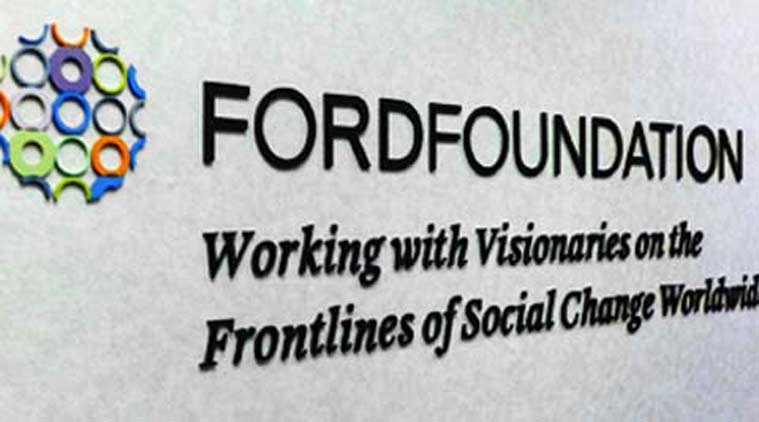
The FF objective, according to Bissell, was “not so much to defeat the leftist intellectuals in dialectical combat [sic] as to lure them away from their positions.”[4] Thus FF funneled CIA funds to the Congress for Cultural Freedom (CCF) in the 1950s; one of the CCF’s most celebrated activities was the stellar intellectual journal Encounter. A large number of intellectuals were ready to be so lured. CIA-FF went so far as to encourage specific artistic trends such as Abstract Expressionism as a counter to art reflecting social concerns.
The CIA’s infiltration of US foundations in general was massive. A 1976 Select Committee of the US Senate discovered that during 1963-66, of 700 grants each of over $10,000 given by 164 foundations, at least 108 were partially or wholly CIA-funded. According to Petras, “The ties between the top officials of the FF and the U.S. government are explicit and continuing. A review of recently funded projects reveals that the FF has never funded any major project that contravenes U.S. policy.”
Such experiences ought to have alerted intellectuals and various political forces to the dangers of being bankrolled by such sources.
FF states (on the webpage of its New Delhi office) that from its inception to the year 2000 it had provided $7.5 billion in grants, and in 1999 its total endowment was in the region of $13 billion. It also claims that it “receives no funding from governments or any other outside sources”, but the reality, as we have seen, is otherwise.
Ford in India
The FF New Delhi office webpage claims that “At the invitation of Prime Minister Jawaharlal Nehru, the Foundation established an office in India in 1952.” In fact Chester Bowles, US ambassador to India from 1951, initiated the process. Like the rest of the US foreign policy establishment, Bowles was profoundly shocked at the “loss” of China (ie the nationwide coming to power of the communists in 1949). Linked to this was his acute worry at the inability of the Indian army to suppress the communist-led peasant armed struggle in Telangana (1946-51) “until the communists themselves changed their programme of violence”.[5] Indian peasants expected that now, with the British Raj gone, their long-standing demand for land to the tiller would be implemented, and that pressure continued everywhere in India even after the withdrawal of the Telangana struggle.
Bowles wrote to Paul Hoffman, then president of FF: “the conditions may improve in China while the Indian situation remains stagnant…. If such a contrast developed during the next four or five years, and if the Chinese continued their moderate and plausible approach without threatening the northern Indian boundary…. the growth of communism in India might be very great. The death or retirement of Nehru might then be followed by a chaotic situation out of which another potentially strong communist nation might be born.” Hoffman shared these concerns, and stressed the need for a powerful Indian State: “A strong central government must be established…. The hardcore of communists must be kept under control…. The prime minister Pandit Nehru greatly needs understanding, sympathy and help from the people and governments of other free [sic] nations.”[6]
The New Delhi office was soon set up, and, says FF, “was the Foundation’s first program outside the United States, and the New Delhi office remains the largest of its field office operations”. It also covers Nepal and Sri Lanka.
“The fields of activity suggested [by the US State Department] for the Ford Foundation”, writes George Rosen, “were felt to be too sensitive for a foreign (American) government agency to work in…. South Asia rapidly came to the fore as an area for possible foundation activity… Both India and Pakistan were on the rim of China and seemed threatened by communism. They appeared to be important in terms of American policy….”[7] FF acquired extraordinary power over the Indian Plans. Rosen says that “From the 1950s to the early 1960s the foreign expert often had greater authority than the Indian”, and FF and the (FF/CIA-funded) MIT Center for International Studies operated as “quasi-official advisers to the Planning Commission”. Bowles writes that “Under the leadership of Douglas Ensminger, the Ford staff in India became closely associated with the Planning Commission which administers the Five Year Plan. Wherever there was a gap, they filled it, whether it was agricultural, health education or administration. They took over, financed and administered the crucial village-level worker training schools.”[8]
Ford Foundation intervention in Indian agriculture
Given the background of the Chinese revolution and the Telangana struggle, the US priority in India was to find ways to head off agrarian unrest. Thus the first phase of FF’s work was in ‘rural development’. FF was intimately involved in the Indian government’s Community Development Programme (CDP), which Nehru hailed “as a model for meeting the revolutionary threats from left-wing and communist peasant movements demanding basic social reforms in agriculture.” The scheme was to carry out agricultural development with some funds from the Programme and voluntary village labour, thus bringing about what Nehru described as a “peaceful revolution”. At the Indian government’s invitation, FF helped train 35,000 village workers for the CDP.[9] By 1960 the Ford and Rockefeller Foundations had between them extended over $50 million on the CDP alone. And by 1971, India, with grants totalling $104 million, was by far the largest recipient of grant aid from the Ford Foundation’s Overseas Development Programme[10]. However, such cosmetic efforts neither brought about development nor solved the problem of simmering peasant discontent.
In 1959, a team led by a US department of agriculture economist produced the Ford Foundation’s Report on India’s Food Crisis and Steps to Meet It. In place of institutional change (ie redistribution of land and other rural assets) as the key-stone to agricultural development, this report stressed technological change (improved seeds, chemical fertilisers, and pesticides) in small, already irrigated, pockets. This was the ‘Green Revolution’ strategy. Ford even funded the Intensive Agricultural Development Programme (IADP) as a test case of the strategy, providing rich farmers in irrigated areas with subsidised inputs, generous credit, price incentives, and so on. The World Bank too put its weight behind this strategy.[11]
Soon it was adopted by the Indian government, with far-reaching effects. Agricultural production of rice and wheat in the selected pockets grew immediately. Talk of land reform, tenancy reform, abolition of usury, and so on were more or less dropped from official agenda (never to return). But the initial spectacular growth rates eventually slowed. On the average agricultural production all-India has grown more slowly after the Green Revolution than before, and in much of the country per capita agricultural output has stagnated or fallen. Today even the Green Revolution pockets are facing stagnation in yields.
However, the Green Revolution was successful in another sense: it yielded a large market for foreign firms selling either inputs or the technology to manufacture those inputs.
Shift to funding NGO ‘activism’
Since 1972 there has been a shift in FF’s activities in India. Earlier FF had a large staff, focussing on agriculture and rural development, providing technical assistance in these fields and directly implementing its projects. Now FF’s developmental activities continue under the heading “asset-building and community development” (Ford claims that it is responsible for introducing the concept of “micro-lending” in India, now eagerly embraced by the Reserve Bank), but it has added two other heads: “peace and social justice” and “education, media, arts and culture”. This is in line with changes in foundation/funding agency policy worldwide, whereby, since the late 1970s, a new breed of ‘activist’ NGOs, engaging in social and political activity, have been systematically promoted. Among Ford’s “peace and social justice” goals are the promotion of human rights, especially those of women; ensuring open and accountable government institutions; strengthening “civil society through the broad participation of individuals and civic organisations in charting the future”, and supporting regional and international cooperation.[12]
Over the period 1952-2002, FF New Delhi office, the first and oldest of FF’s 13 overseas offices, has distributed $450 million in grants.[13] At a press conference to mark the fiftieth anniversary of FF in India, the foundation’s India representative said that it was launching a new Rs 220 crore ($45 million) funding programme — twice the usual annual allocation — and committing substantial funds to disadvantaged groups such as adivasis, dalits and women. “Asked if the shift in focus [from FF’s traditional activities in rural development] was prompted by the inequalities caused by the Indian government’s economic policies of globalisation and liberalisation, he said there was no question of getting away from globalisation but it had brought some concern also. The projects would, therefore, act as a corrective measure to offset the adverse impact of uncontrolled market forces.”[14]
This is precisely the language of the World Bank and IMF: their answer to “uncontrolled market forces” is not to control them, but to set up tiny well-publicised safety nets to catch a handful from among the masses of people thrown out by market forces.
Further, FF would specifically ensure that people’s struggles against the government do not take the course of confrontation: “While admitting that several of the voluntary organisations benefitting from the funding programme could be in confrontation with the government when they were working on issues such as welfare of Adivasis, he said the Foundation did not believe in conflict with the government. The attempt was to complement and cooperate with the efforts of the government.”[15]
Ford has chosen to focus on three particularly oppressed sections of Indian society — adivasis, dalits, and women. All three are potentially important components of a movement for basic change in Indian society; indeed, some of the most militant struggles in recent years have been waged by these sections. However, FF takes care to treat the problems of each of these sections as a separate question, to be solved by special “promotion of rights and opportunities”. Since FF’s funds are negligible in relation to the size of the social problems themselves, the benefits of its projects flow to a small vocal layer among these sections. These are persons who might otherwise have led their fellow adivasis, dalits and women on the path of “confrontation with the government” in order to bring about basic change, change for all. Instead special chairs in dalit studies will be funded at various institutions; women will be encouraged to focus solely on issues such as domestic violence rather than ruling class/State violence; adivasis will be encouraged to explore their identity at seminars; and things will remain as they are.
Endnotes
1. Petras, “The Ford Foundation and the CIA: A documented case of philanthropic collaboration with the secret police”, December 2001, www.rebelion.org/petras/english/ford010102.
2. The Cultural Cold War: The CIA and the World of Arts and Letters, 2000, p. 139, quoted in Petras, “The Ford Foundation…”
3. Petras, ibid.
4. Petras, citing Saunders, p. 140.
5. Bowles, Ambassador’s Report, 1954, p.79.
6. George Rosen, Western Economists and Eastern Societies: Agents of Change in South Asia 1950-70, 1985, cited in P.J. James, Voluntary Agencies: The True Mission, 1993, pp. 65-67.
7. Rosen, cited in S.K. Ghosh, Development Planning in India: Lumpendevelopment and Imperialism, 2002, p. 23.
8. Bowles, op cit, p. 220.
9. Quotations from Ghosh, Development Planning; see pp. 23-34 for a detailed account.
10.James, p. 69, citing Rosen, p. 56.
11. S.K. Ghosh, Imperialism’s Tightening Grip on Indian Agriculture, 1998, p. 24.
12. We have not in this article discussed the last topic, namely FF support of “regional and international cooperation”. This is an important area of FF activity in India: the sponsorship of institutes, organisations, seminars, foreign trips, studies, and so on regarding India’s relations with other countries, other issues of strategic affairs, and matters of internal security. Through such grants, the US government helps shape Indian foreign policy formulation, and helps integrate Indian internal security institutions with US ones. For example, the New Delhi-based “Institute for Peace and Conflict Studies” is carrying on an FF-funded “three-year project to study different aspects of security in India… a) non-military challenges to security, b) challenges to national integration, c) India’s security problematique and d) governance and security. Another recipient of FF funds at the same institute is “a two-year project to explore alternative paradigms of national security in South Asia.”
13. www.fordfound.org/news/view_news_detail.cfm?news_index=63.
14. Emphasis added.
15. Hindu, 6/3/02; emphasis added.
Part IV
Funds for the World Social Forum
The WSF is not transparent regarding the sources of its funding. Moreover, given the structure of the WSF, where a number of organisations carry on activities semi-autonomously, it is near-impossible to trace the funding provided to all activities by all funding agencies.
A. Funds for the WSF Secretariat
Certain funds are provided directly to the WSF as a body. The following list, available on the WSF website, does not provide a break-up by amount:
WSF Partners WSF 2001:
- Droits et Démocratie — a foundation run by the Canadian Ministry of Foreign Affairs.
- Ford Foundation
- Heinrich Boll Foundation — of the German Greens party, a partner of the ruling coalition in Germany, whose leader, Germany’s foreign minister, was an active supporter of the wars on Yugoslavia and Afghanistan
- ICCO — an inter-church organisation, funded by the Netherlands government and the European Union
- Le Monde Diplomatique
- Oxfam
- RITS – Rede de Informações para o Terceiro Setor
- The state government of Rio Grande de Sul
- The city government of Porto Alegre
WSF Partners WSF 2002:
RITS, EED, CCFD, NOVIB, OXFAM GB, Centro Norte Sul, ACTIONAID, ICCO, FUNDAÇÃO FORD, Governo do Estado de Rio Grande do Sul, Prefeitura de Porto Alegre, Procergs, World Forum for Alternatives.
B. Funding for WSF participants
In fact the financial role of the funding agencies is much larger than would be reflected in their contributions to the WSF as such. For the same agencies also funded various organisations which attended the WSF, and staged activities there. For example, the following list is from the Ford Foundation website database:
1. Ford Foundation Grants to WSF and Related Operations (from the Ford Foundation website database; apparently does not include current funding)
The following grants have been given as part of Ford’s “Asset Building and Community Development Program”, which “supports efforts to reduce poverty and injustice by helping to build the financial, natural, social, and human assets of low-income individuals and communities.”
Organization: Brazilian Association of NGOs
Purpose: For the 2003 World Social Forum, where civil society organizations develop social and economic alternatives to current patterns of globalization, based on human rights and sustainable development
Location: BRAZIL
Program: Peace and Social Justice
Unit: Governance and Civil Society
Subject: Civil Society
Amount: $500,000
See this.
Organization: Brazilian Association of NGOs
Purpose: Support for the organization of the first World Social Forum Meeting in Porto Alegre, Brazil in January 2001
Location: BRAZIL
Program: Peace and Social Justice
Unit: Governance and Civil Society
Subject: Civil Society
Amount: $100,000
See this.
Organization: Brazilian Association of NGOs
Purpose: To hold a seminar on international mechanisms for the protection of human rights during the second World Social Forum
Location: BRAZIL
Program: Peace and Social Justice
Unit: Human Rights
Subject: Human Rights
Amount: $40,000
See this.
Organization: Brazilian Consumer Defense Institute
Purpose: For a multimedia public information campaign at the World Social Forum and the Pan-Amazonian Social Forum
Location: BRAZIL
Program: Asset Building and Community Development
Unit: Community and Resource Development
Subject: Environment and Development
Amount: $30,000
See this.
Organization: Feminist Studies and Assistance Center
Purpose: To coordinate a campaign against fundamentalist dogmas during thesecond World Social Forum
Location: BRAZIL
Program: Peace and Social Justice
Unit: Human Rights
Subject: Human Rights
Amount: $65,600
See this.
Organization: Internews Interactive, Inc.
Purpose: For the Bridge Initiative on Globalization, a collaboration with television agency Article Z, to provide a means of communication for participants in the World Social Forum and World Economic Forum
Location: SAN RAFAEL, CA
Program: Peace and Social Justice
Unit: Governance and Civil Society
Subject: Civil Society
Amount: $153,000
See this.
2. Sponsors of the World Social Forum media centre
Another example of indirect funding: the WSF media centre, given below. (source)
The “independent” media centre Ciranda was sponsored by Le Monde Diplomatique and IPS, Inter Press Services (IPS). IPS itself is sponsored by:
- Canadian International Development Agency (CIDA)
- Carl-Duisberg-Gesellschaft – CDG (Germany)
- Charles Stewart Mott Foundation (USA)
- Danish Ministry of Foreign Affairs
- European Commission
- Finnish Ministry of Foreign Affairs
- Food and Agriculture Organization of the United Nations (FAO)
- Ford Foundation (USA)
- Friedrich-Ebert-Stiftung – FES (Germany)
- German Ministry for Economic Development and Cooperation (BMZ)
- Group of 77, G77
- International Labour Organisation – ILO
- Italian Ministry of Foreign Affairs
- John D. & Catherine T. MacArthur Foundation (USA)
- Netherlands Ministry of Foreign Affairs
- Netherlands Organization for International Development Cooperation, Novib
- North-South Centre (Council of Europe)
- Norwegian Agency for Development – NORAD
- Norwegian Ministry of Foreign Affairs
- Student Union, Helsinki University
- Swedish International Development
- Cooperation Agency – SIDA
- U.N. Children´s Fund – UNICEF
- U.N. Development Fund for Women – UNIFEM
- U.N. Development Programme – UNDP
- UNESCO
- U.N. Environment Programme – UNEP
- U.N. Population Fund – UNFPA
- W. Alton Jones Foundation (USA)
3. Other sources of funds
At the first World Social Forum in Porto Alegre, the elected officials present agreed to constitute an International Network of Members of Parliament to advance the goals of the WSF. Francis Wurtz, chairperson of the United Left in the European Parliament, revealed that “The principle was adopted that the European Parliament would take responsibility for the coordination of all technical aspects of the Parliamentary Network, including its financing.”[1]

Source: alliance21.org
The extent of coordination among the WSF funders is clear from the following passage from the website of the US-based “Funders Network on Trade and Globalization”:
“World Social Forum Funder Conference: FNTG initiated and has been helping to organize and co-host (with Ford and Veatch) a funder conference in New York on June 12 [2002] at the Ford Foundation. The convening, which brought together over 60 funders from NY and beyond, highlighted the work of the WSF, but also encouraged funders to support the participation of relevant US and non-US grantees at this annual forum, and the development of alternative strategies for equitable and sustainable development in the US and around the world.”[2]
Endnotes
1. How Not to Fight Globalization?”, Alan Benjamin, The Organizer, www.theorganizer.org/to/to_nd-3.htm
2. www.fntg.org/about/services.html; emphasis added.
Note to readers: Please click the share button above. Follow us on Instagram and Twitter and subscribe to our Telegram Channel. Feel free to repost and share widely Global Research articles.
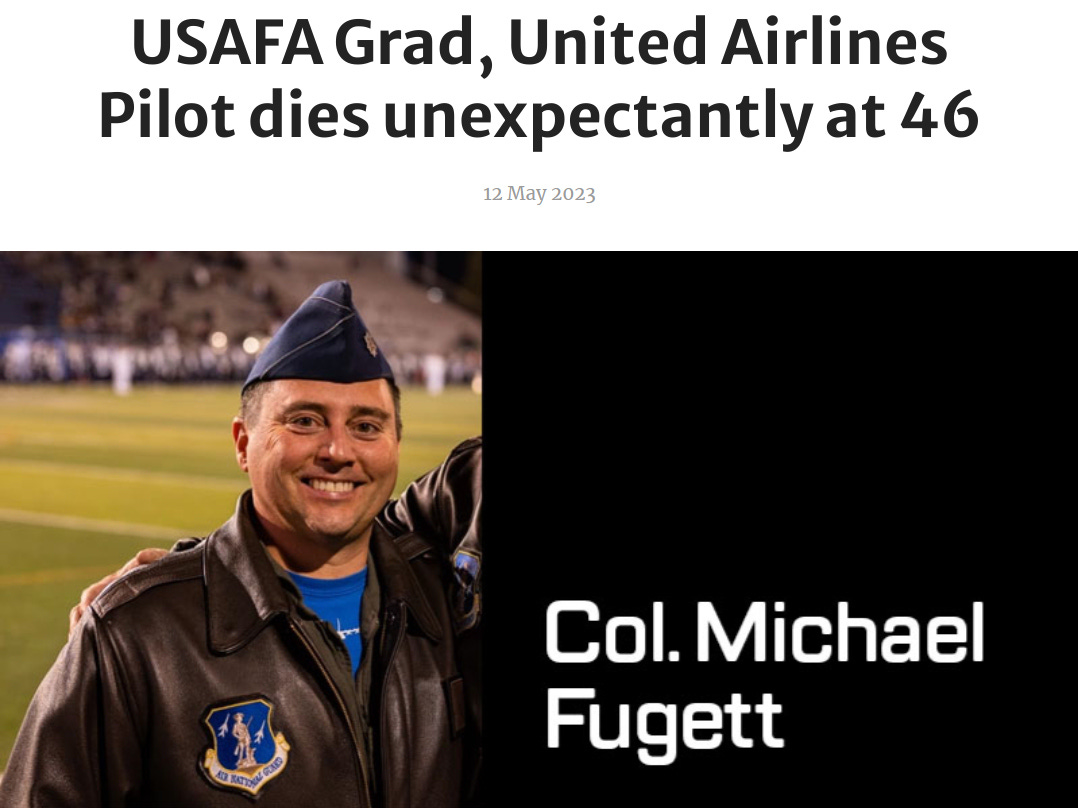
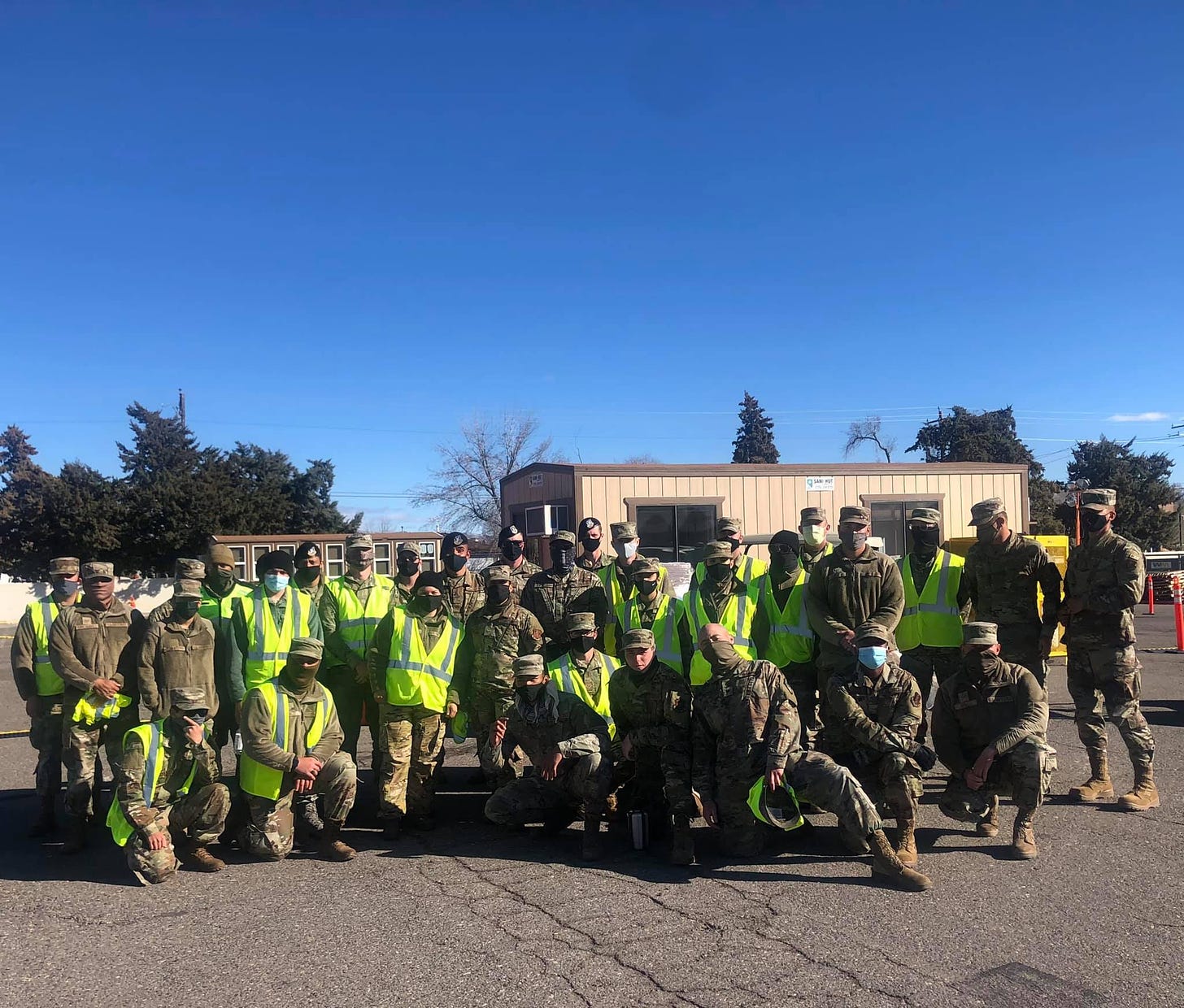

 The Worldwide Corona Crisis, Global Coup d’Etat Against Humanity
The Worldwide Corona Crisis, Global Coup d’Etat Against Humanity


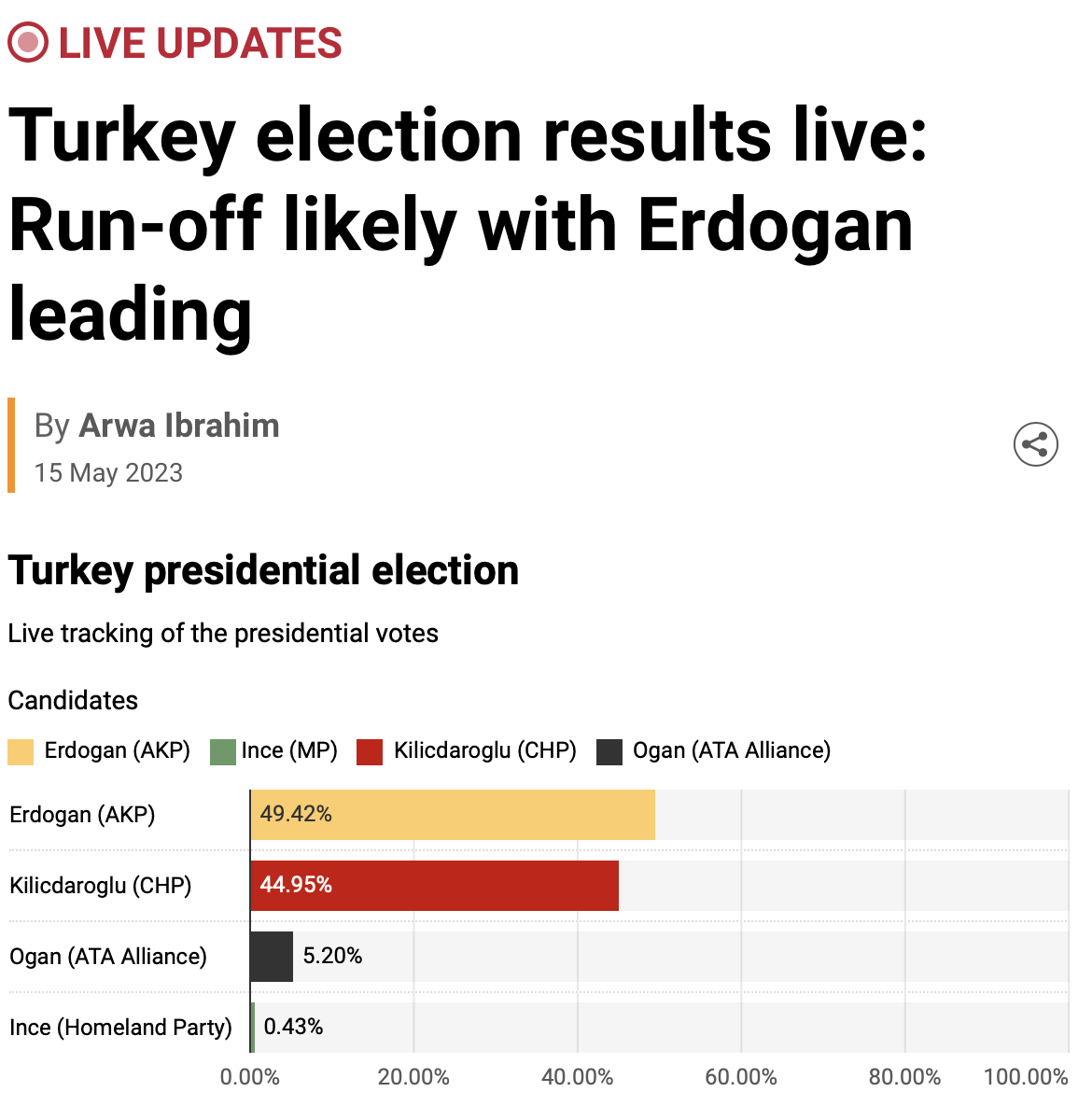
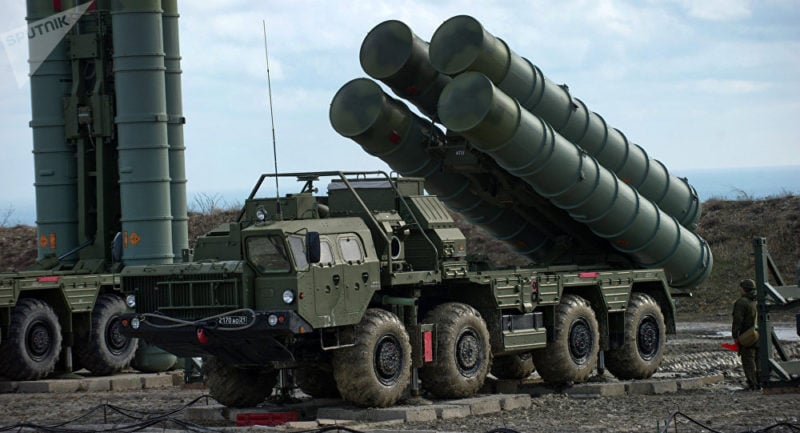
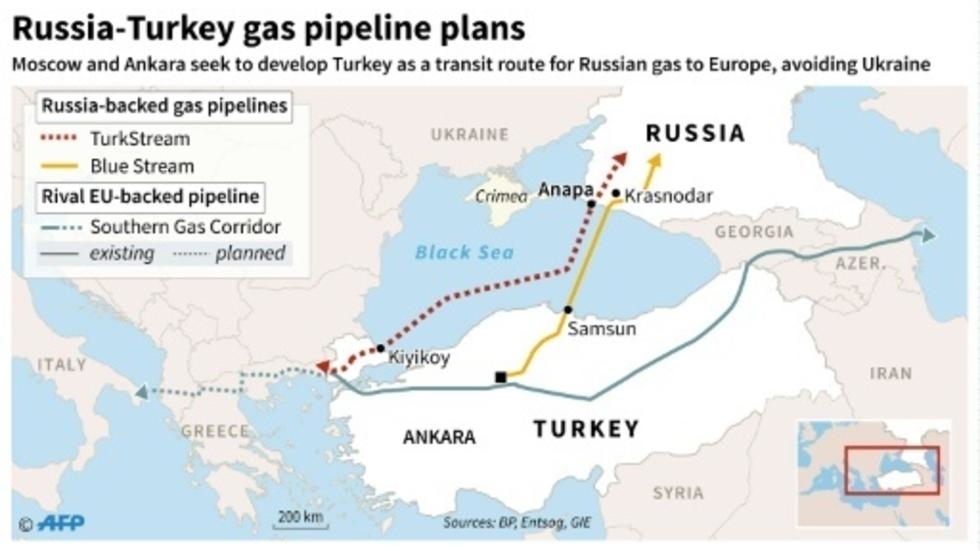
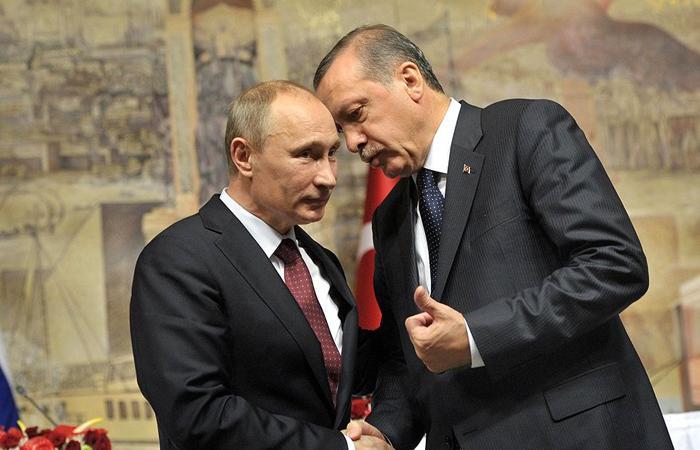
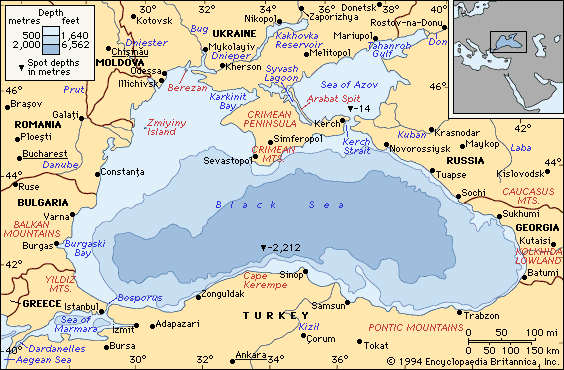










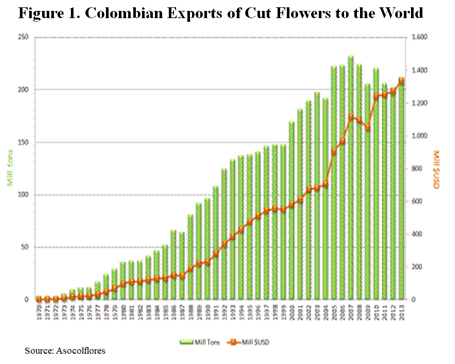
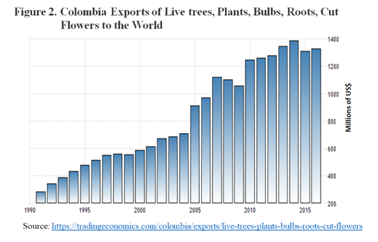

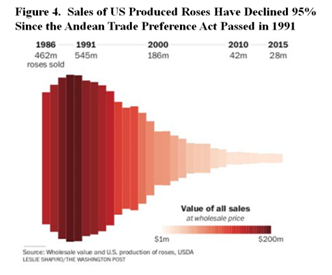

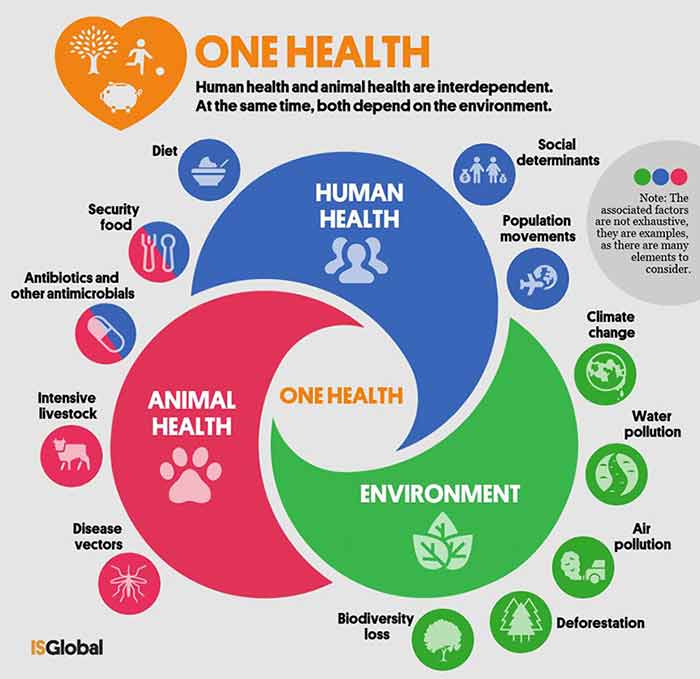

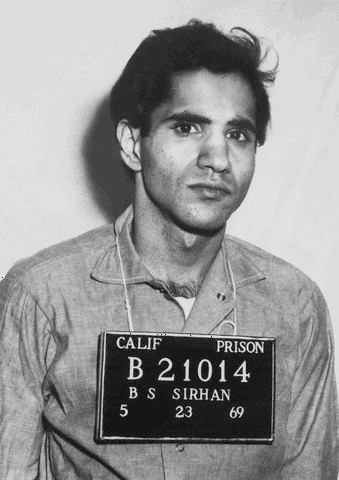
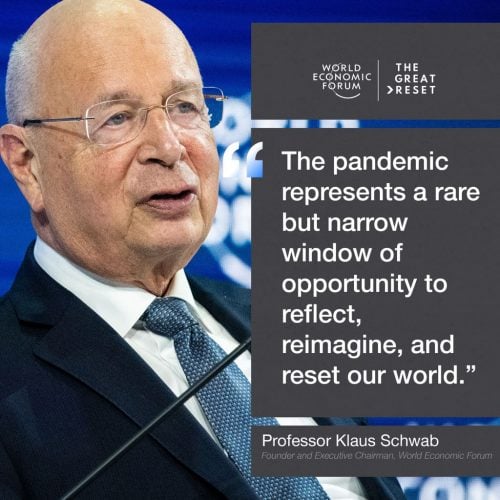


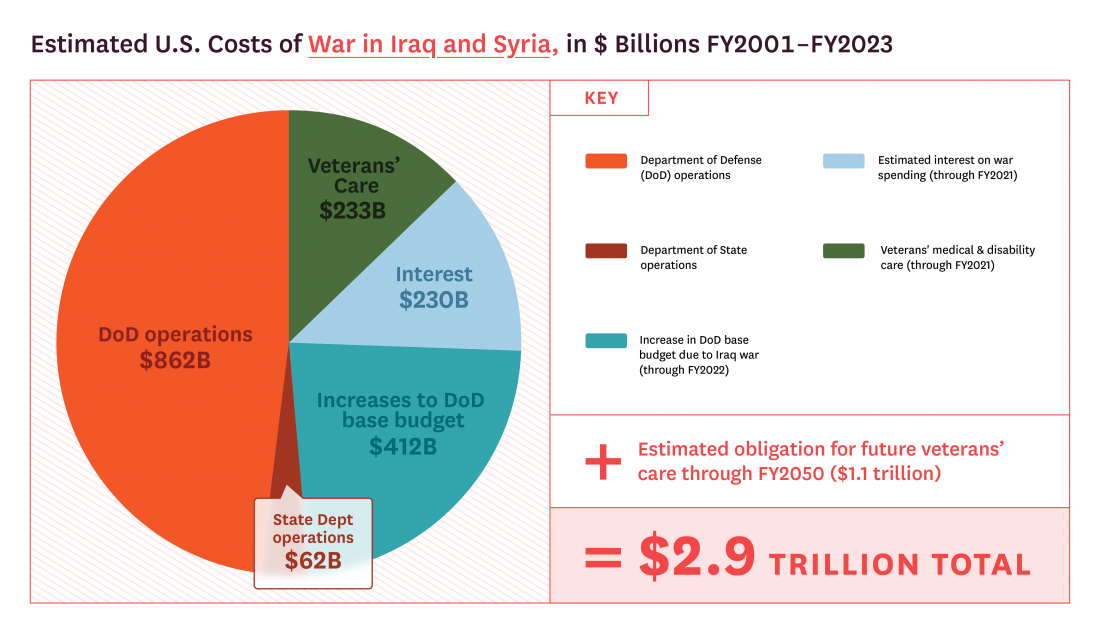






 The Great FREESET Versus The Great Reset. URGENT Message from Robert F. Kennedy Jr.
The Great FREESET Versus The Great Reset. URGENT Message from Robert F. Kennedy Jr. Video: Tucker Carlson Shared a Terrifying Message. “How Filthy and Dishonest are Our News Media”
Video: Tucker Carlson Shared a Terrifying Message. “How Filthy and Dishonest are Our News Media” The Federal Reserve Cartel: The Eight Families
The Federal Reserve Cartel: The Eight Families The Day JFK Warned Us About the Globalists’ “Monolithic and Ruthless Conspiracy” and Their Censorship Regime
The Day JFK Warned Us About the Globalists’ “Monolithic and Ruthless Conspiracy” and Their Censorship Regime The Royal Crowning of King Charles III and the WEF’s Great Reset
The Royal Crowning of King Charles III and the WEF’s Great Reset Toxic Chemicals Are Pouring Out of Consumer Products — Here Are the Most Dangerous
Toxic Chemicals Are Pouring Out of Consumer Products — Here Are the Most Dangerous Linoleic Acid — The Most Destructive Ingredient in Your Diet
Linoleic Acid — The Most Destructive Ingredient in Your Diet Video: Supported by Bill Gates, The WHO Plans to Have 10 Years of Pandemics (2020-2030)
Video: Supported by Bill Gates, The WHO Plans to Have 10 Years of Pandemics (2020-2030) Club of Rome “Limits to Growth” Author Promotes Genocide of 86% of the World’s Population
Club of Rome “Limits to Growth” Author Promotes Genocide of 86% of the World’s Population Was the Tucker “Take Down” a Deep-State Hit?
Was the Tucker “Take Down” a Deep-State Hit? Dangerous Crossroads: Pending U.S. Congressional Resolution on War Against Russia
Dangerous Crossroads: Pending U.S. Congressional Resolution on War Against Russia Zelensky Regime’s Fate Is Sealed
Zelensky Regime’s Fate Is Sealed “US Foreign Policy Has Collapsed.” RFK Jr. Pledges to Close 800 US Bases and Bring American Troops Home
“US Foreign Policy Has Collapsed.” RFK Jr. Pledges to Close 800 US Bases and Bring American Troops Home High School “Died Suddenly”: 14-19 Year Olds Dying Suddenly
High School “Died Suddenly”: 14-19 Year Olds Dying Suddenly As Russia Stumbles in Ukraine, Confusion Is Unveiled
As Russia Stumbles in Ukraine, Confusion Is Unveiled Global Britain and King Charles’s Great Reset
Global Britain and King Charles’s Great Reset “A Guiding Light for 9/11 Truth.” A Tribute to Graeme MacQueen
“A Guiding Light for 9/11 Truth.” A Tribute to Graeme MacQueen History: The Federal Reserve Cartel: Freemasons and The House of Rothschild
History: The Federal Reserve Cartel: Freemasons and The House of Rothschild A Kingly Proposal: Letter from Julian Assange to King Charles III
A Kingly Proposal: Letter from Julian Assange to King Charles III The War in Ukraine: Made in Washington Not Moscow
The War in Ukraine: Made in Washington Not Moscow